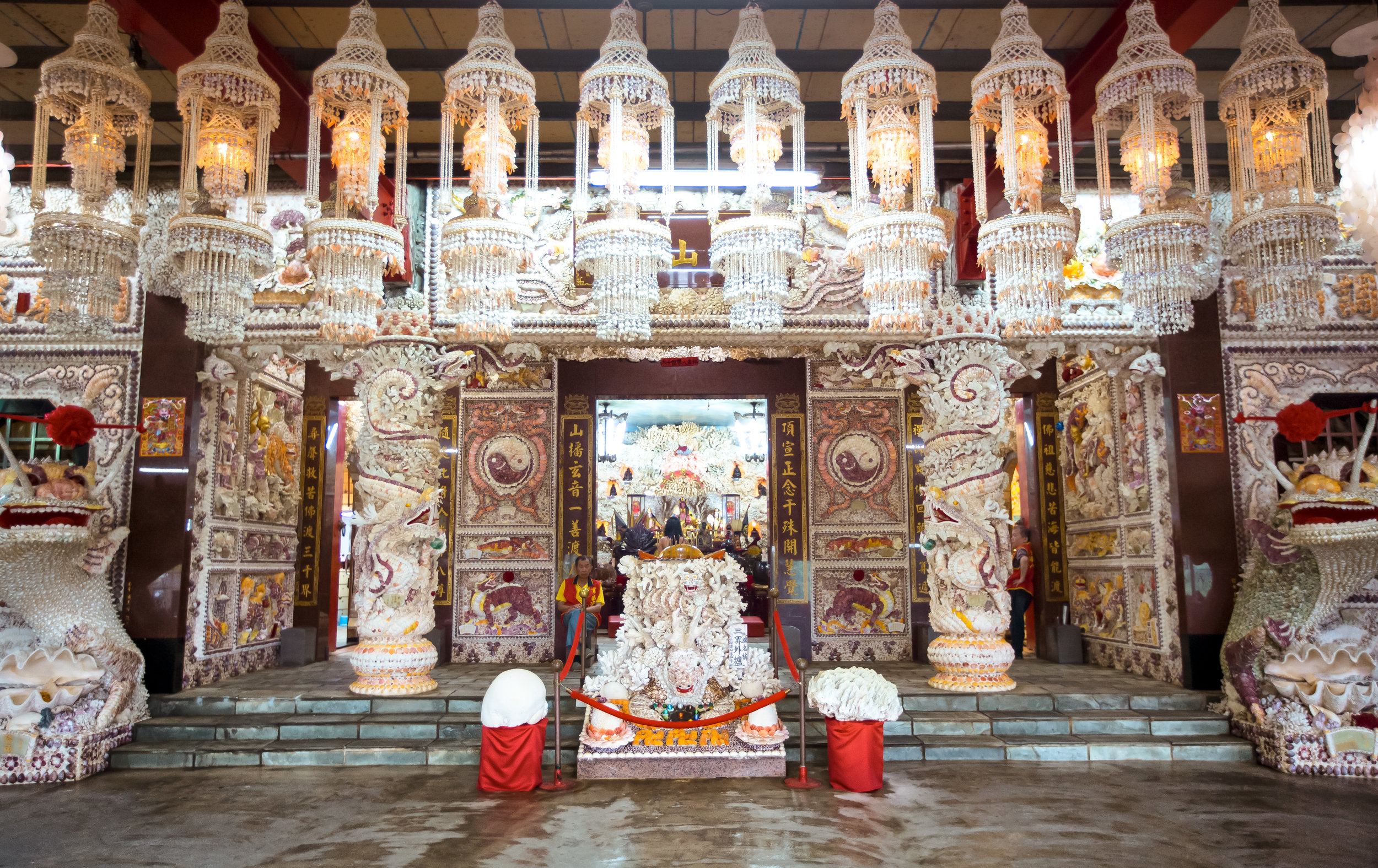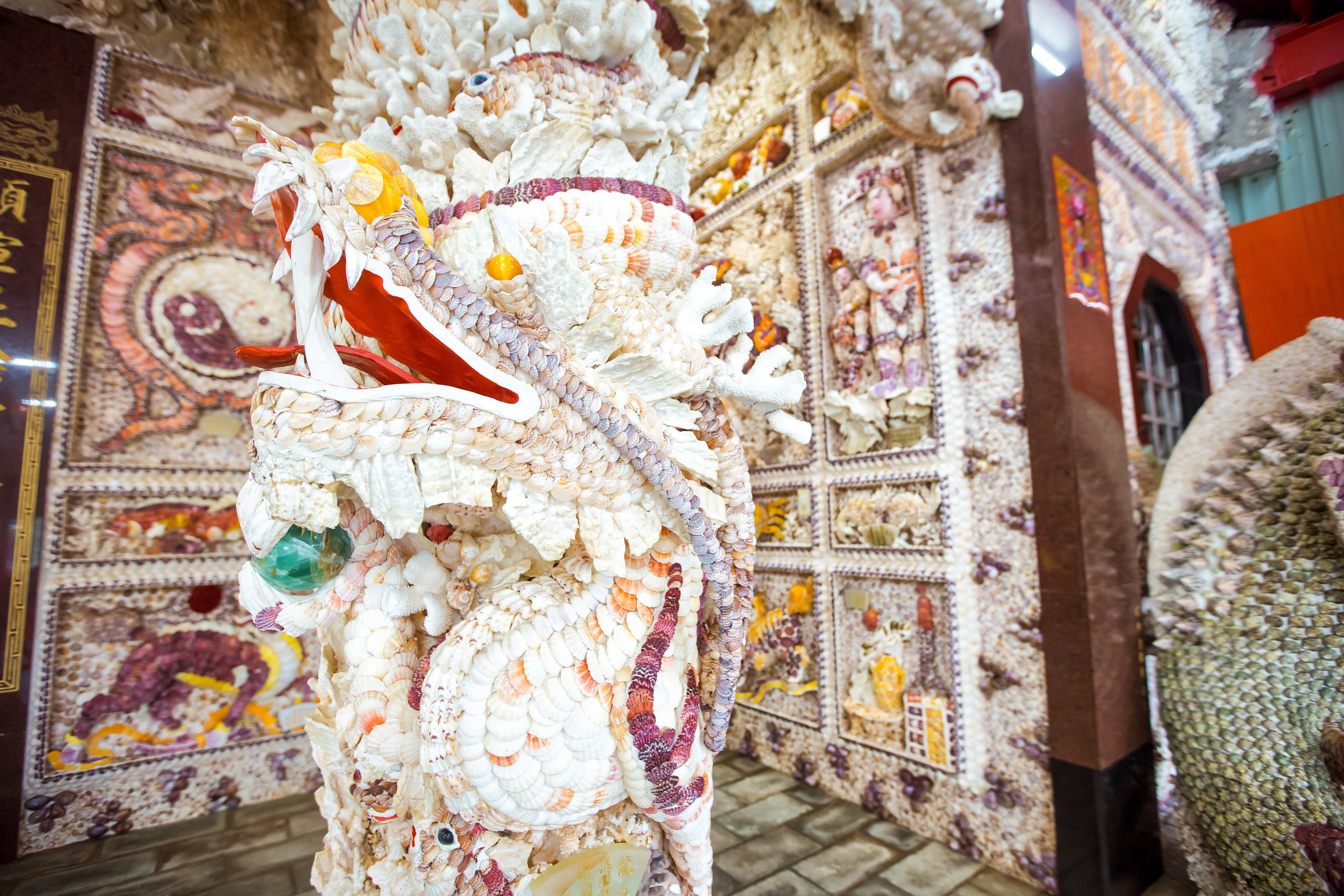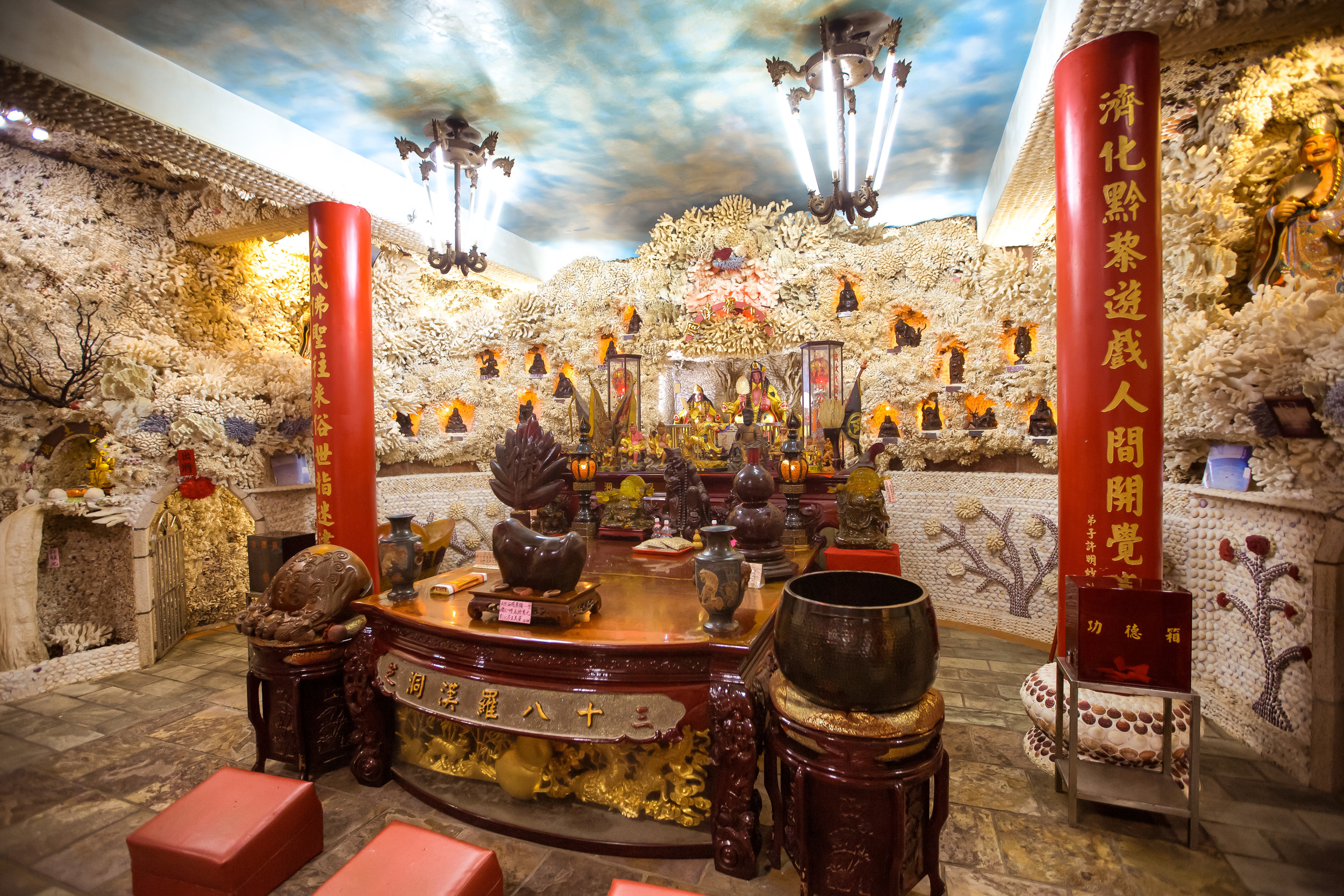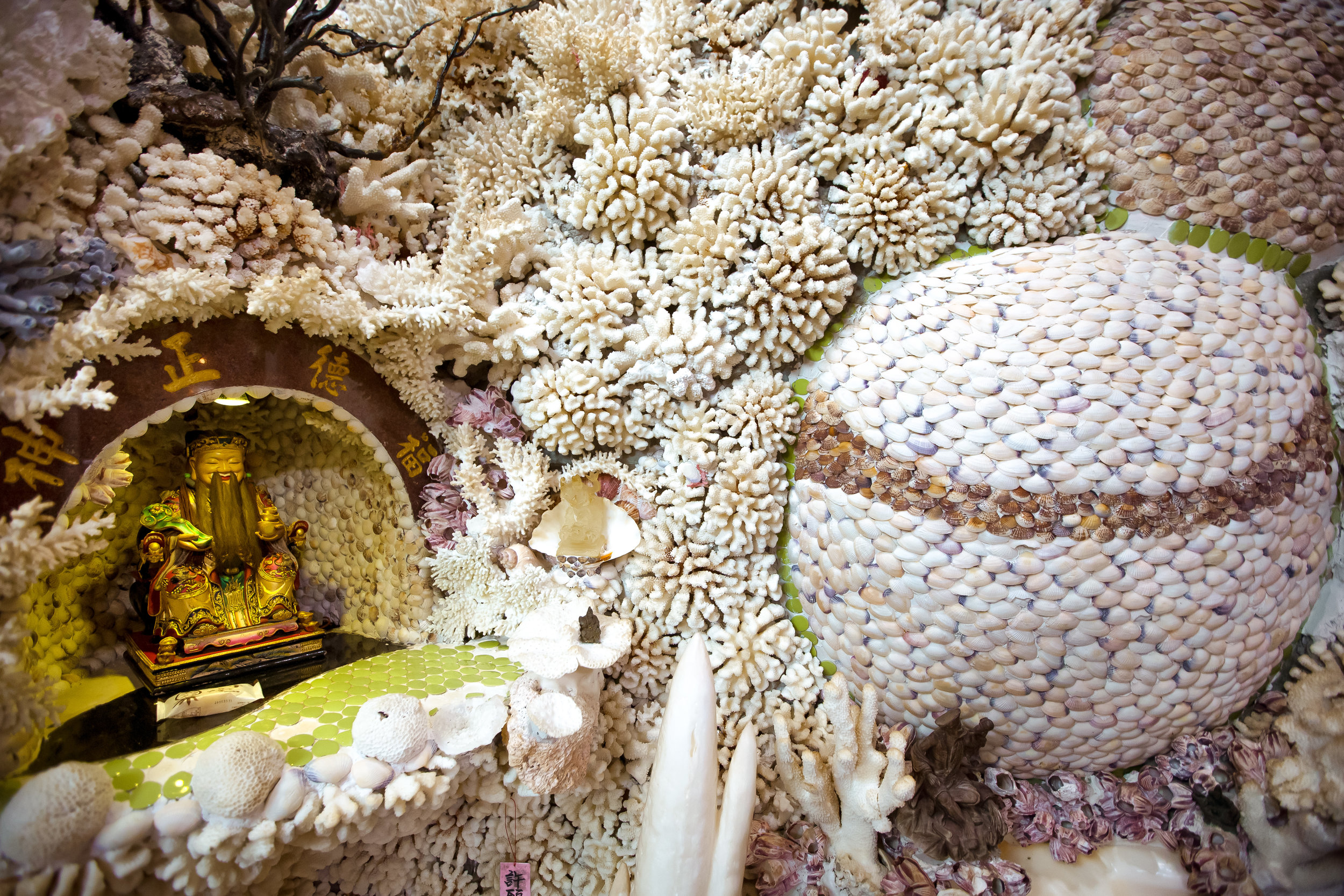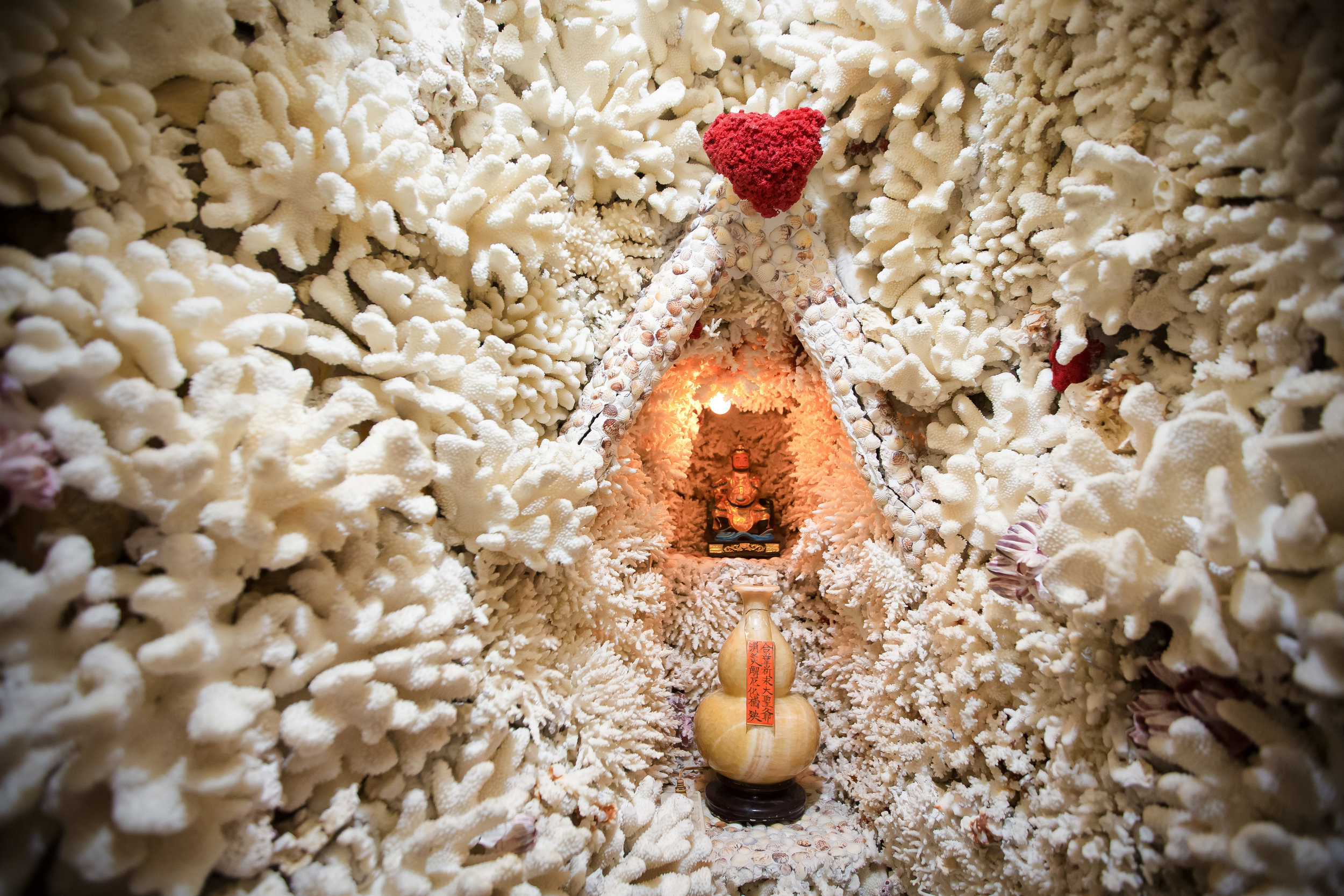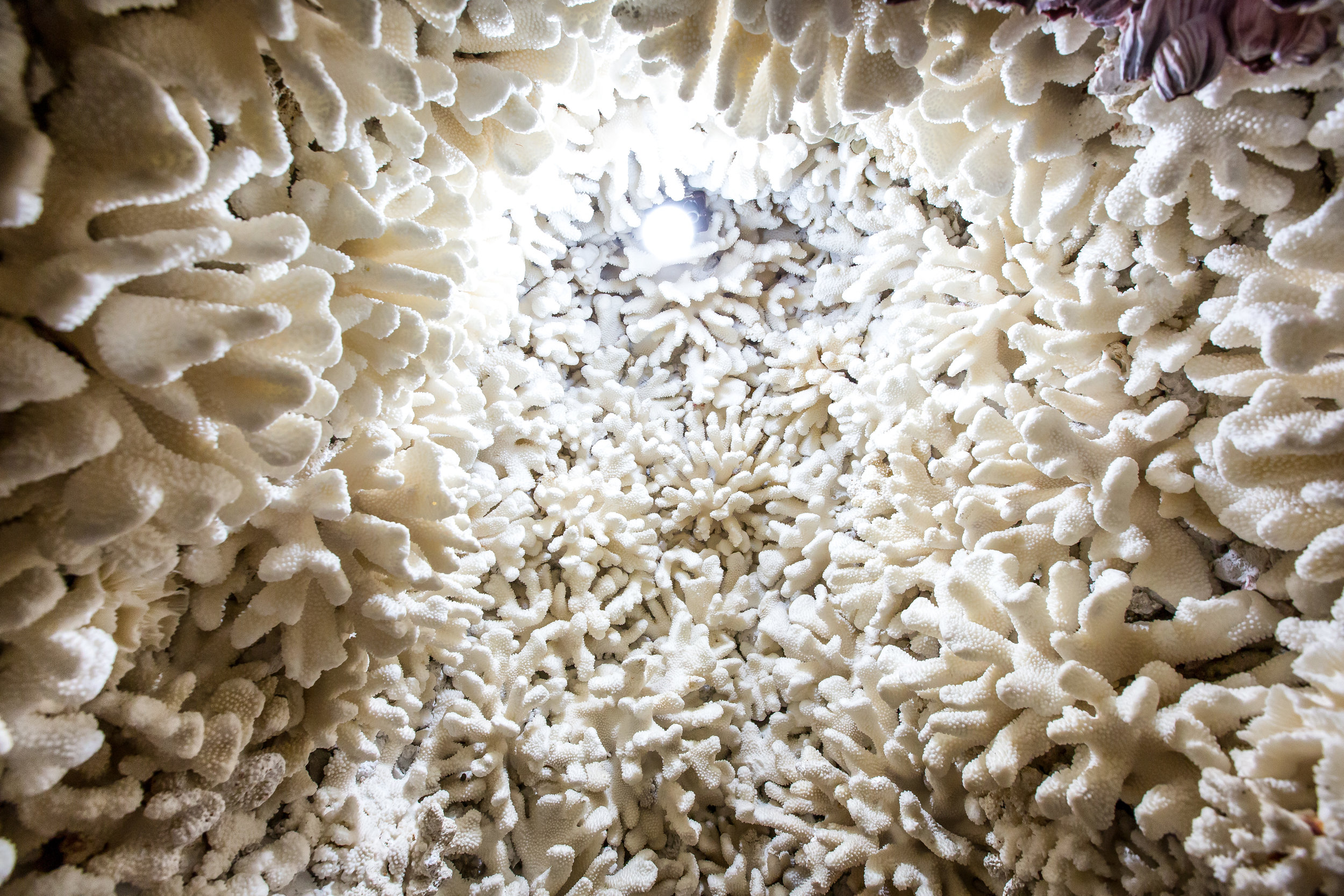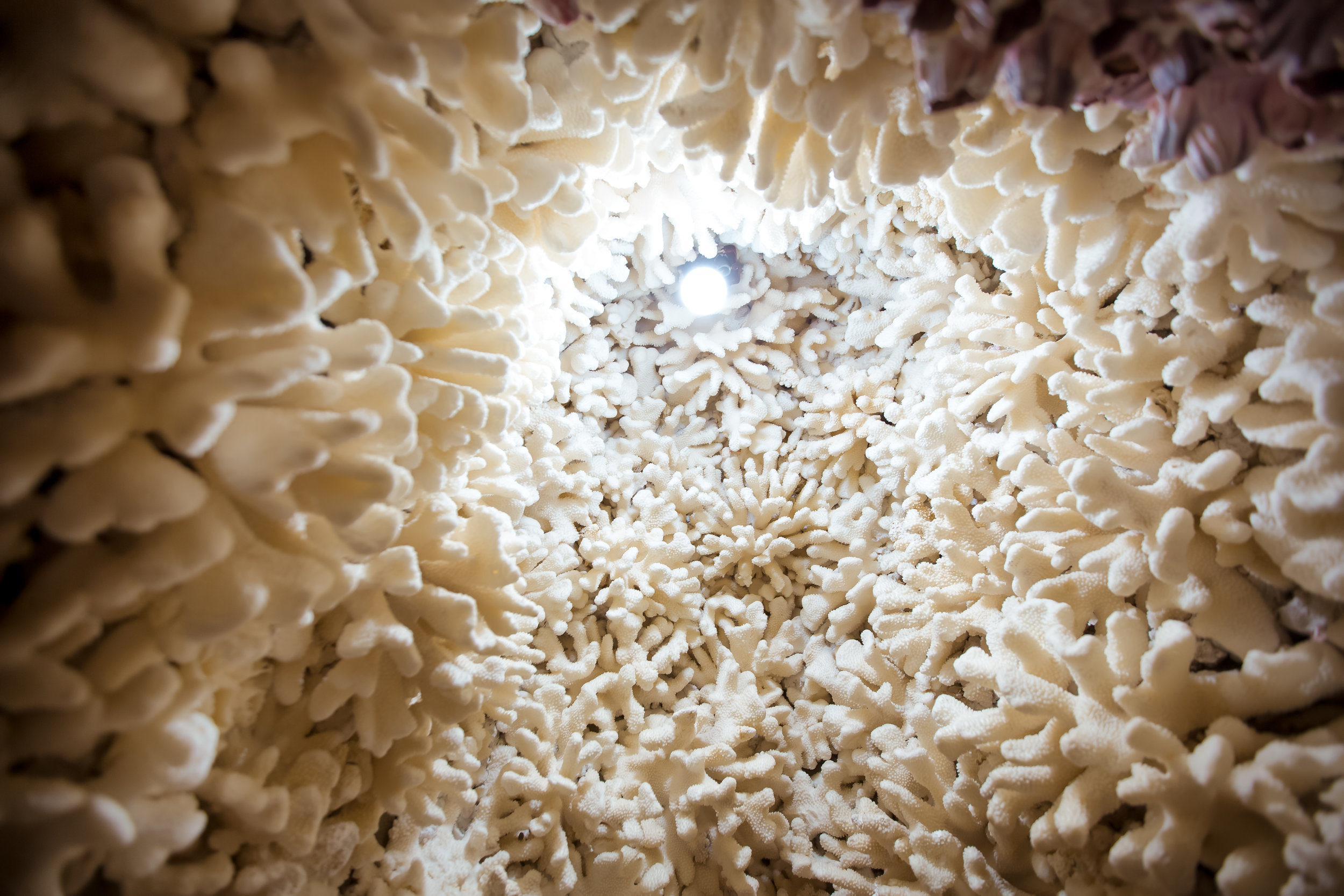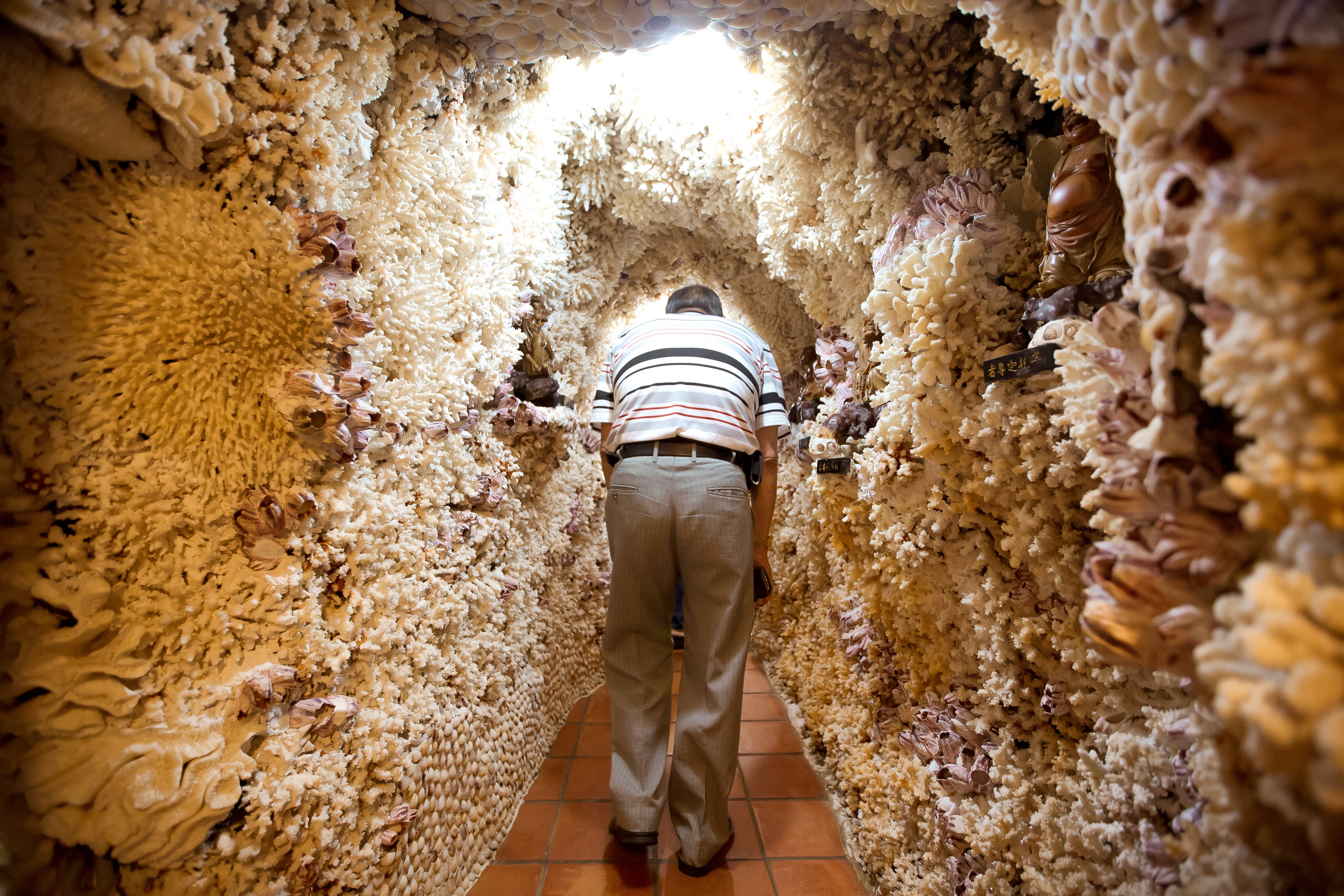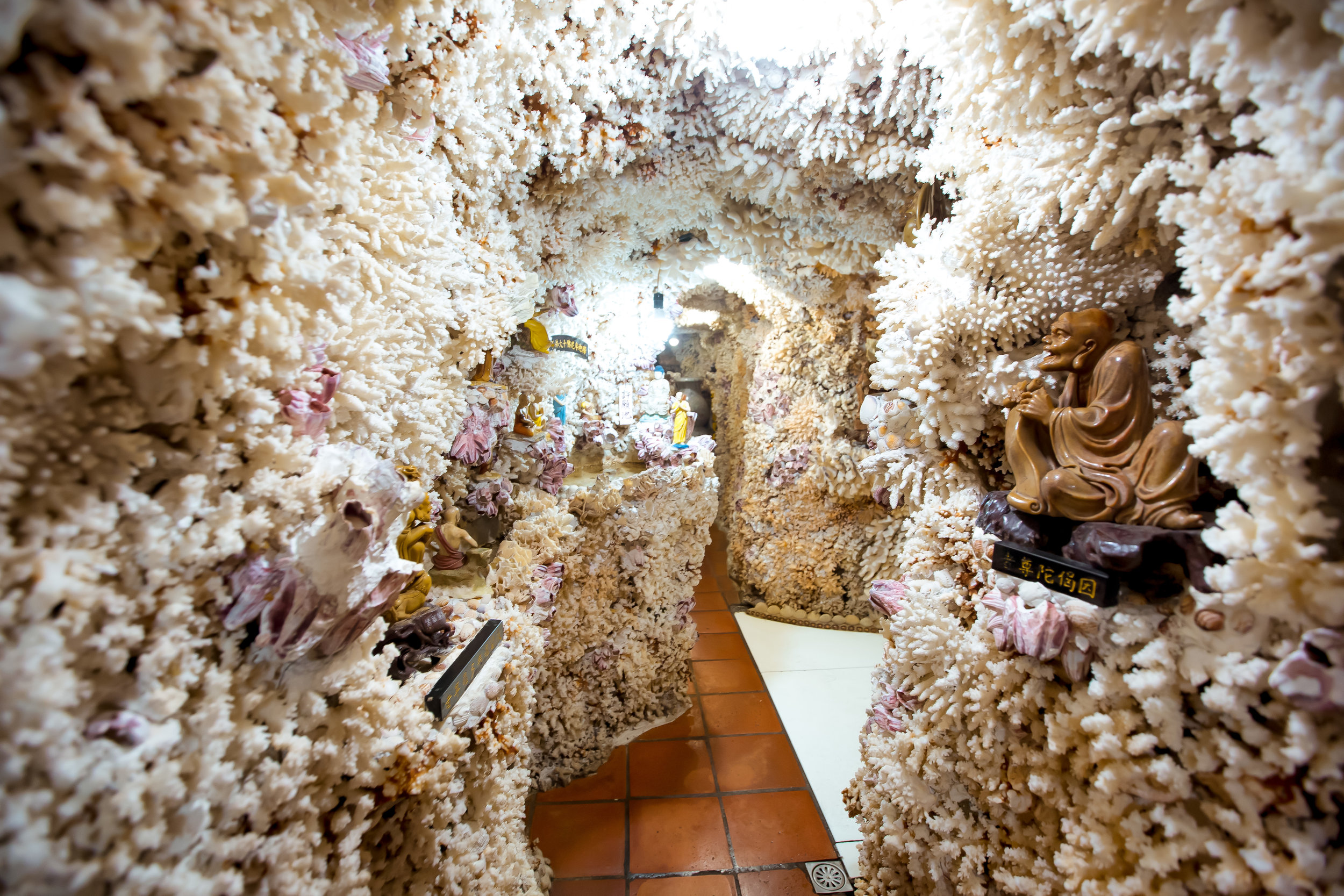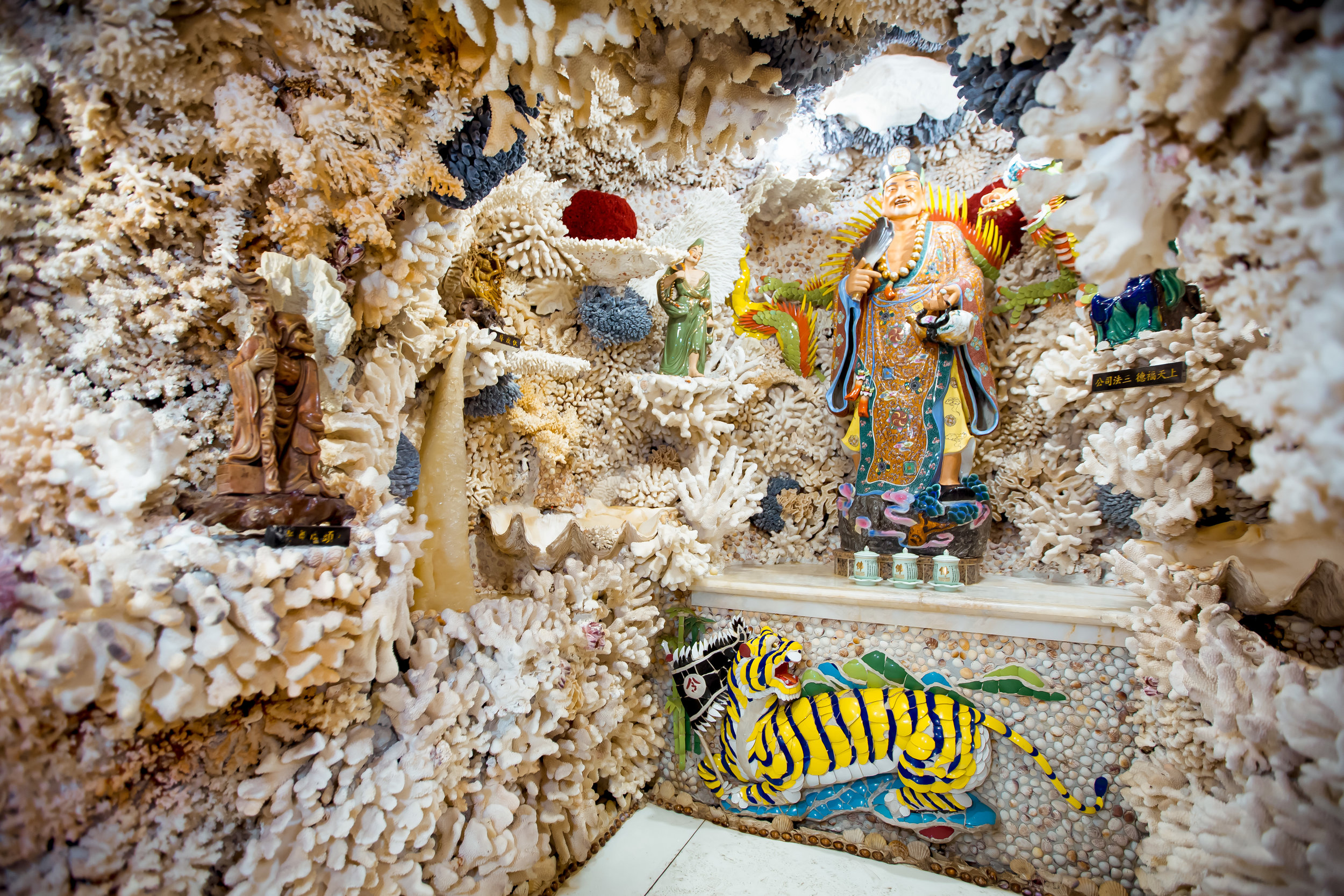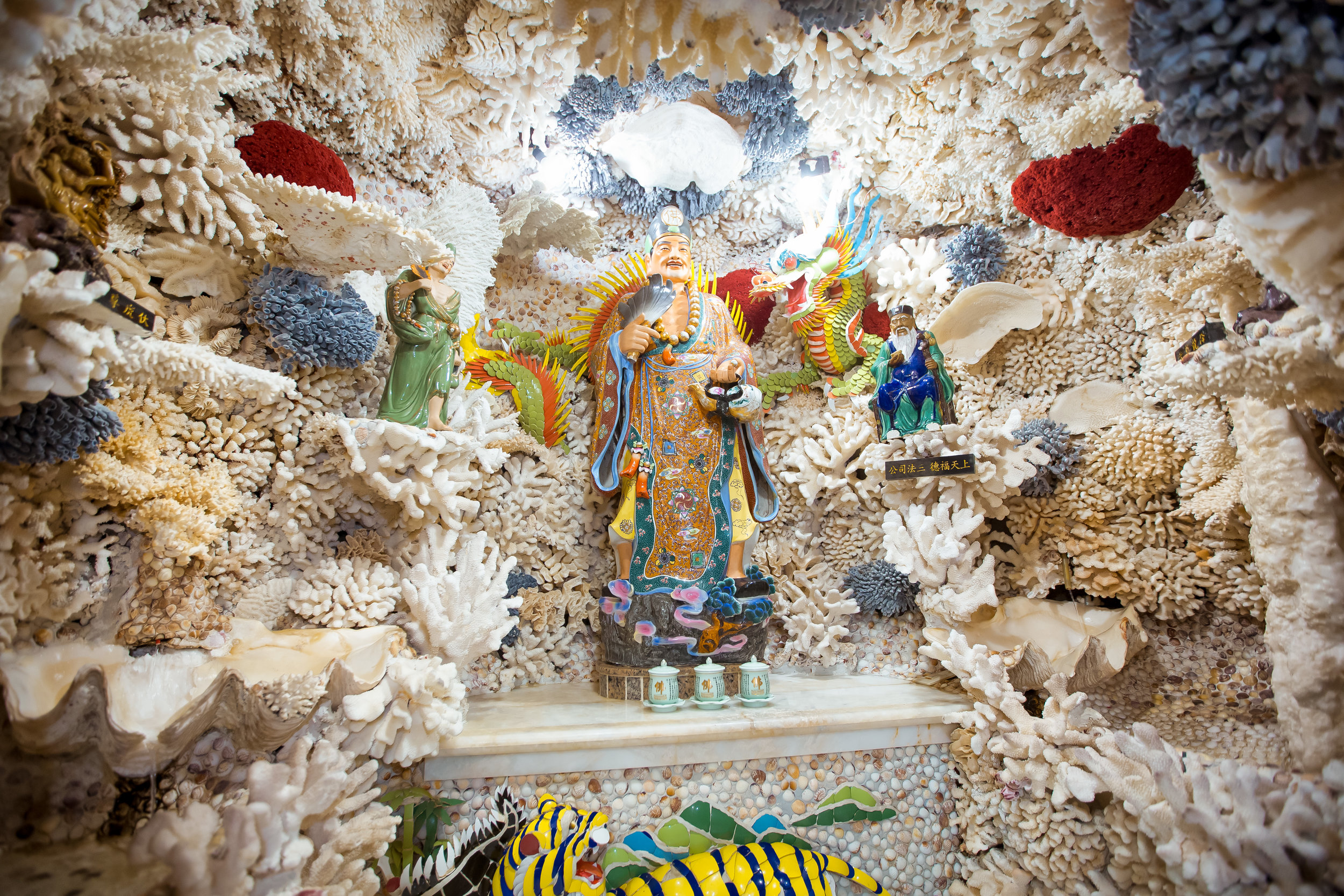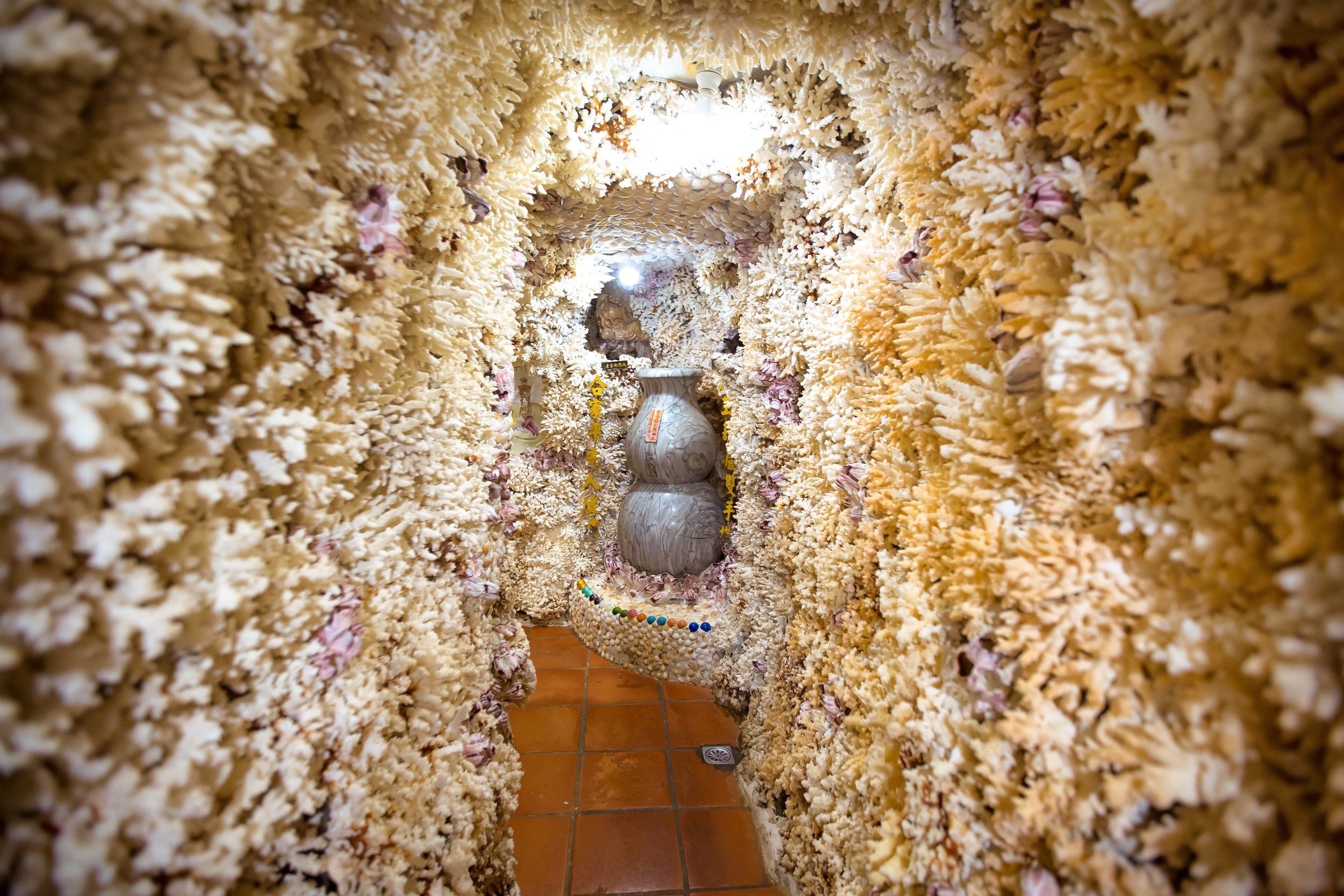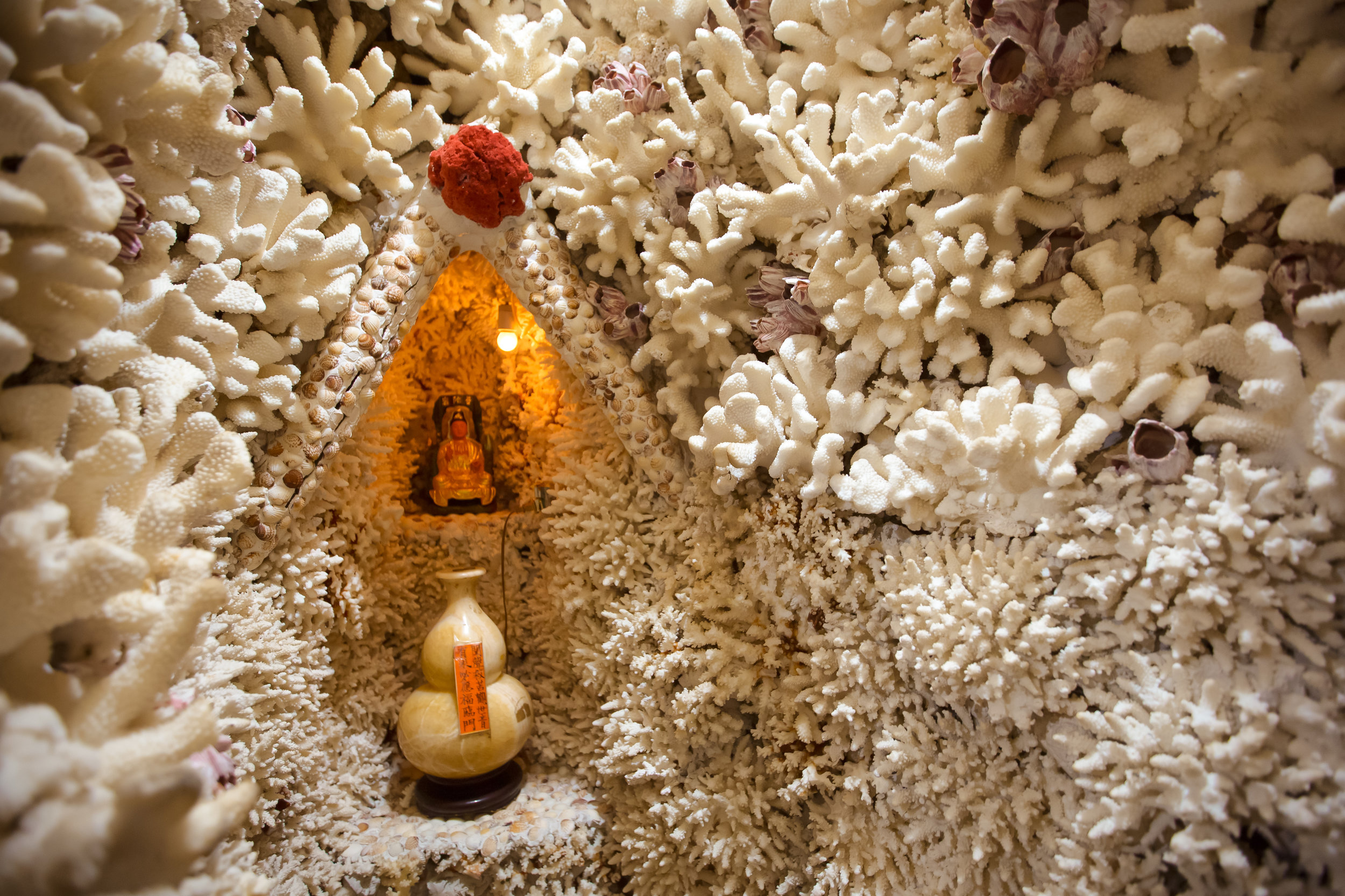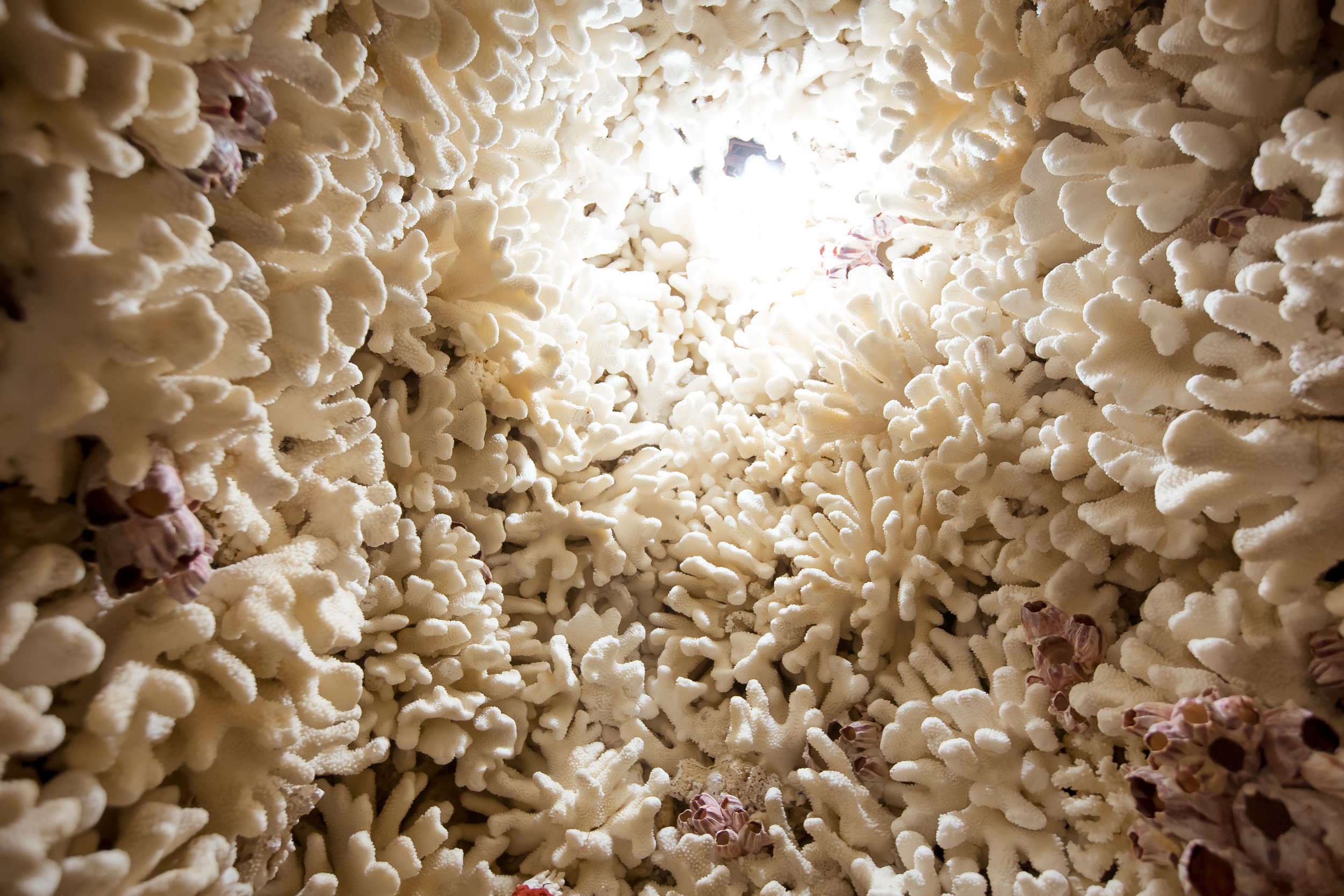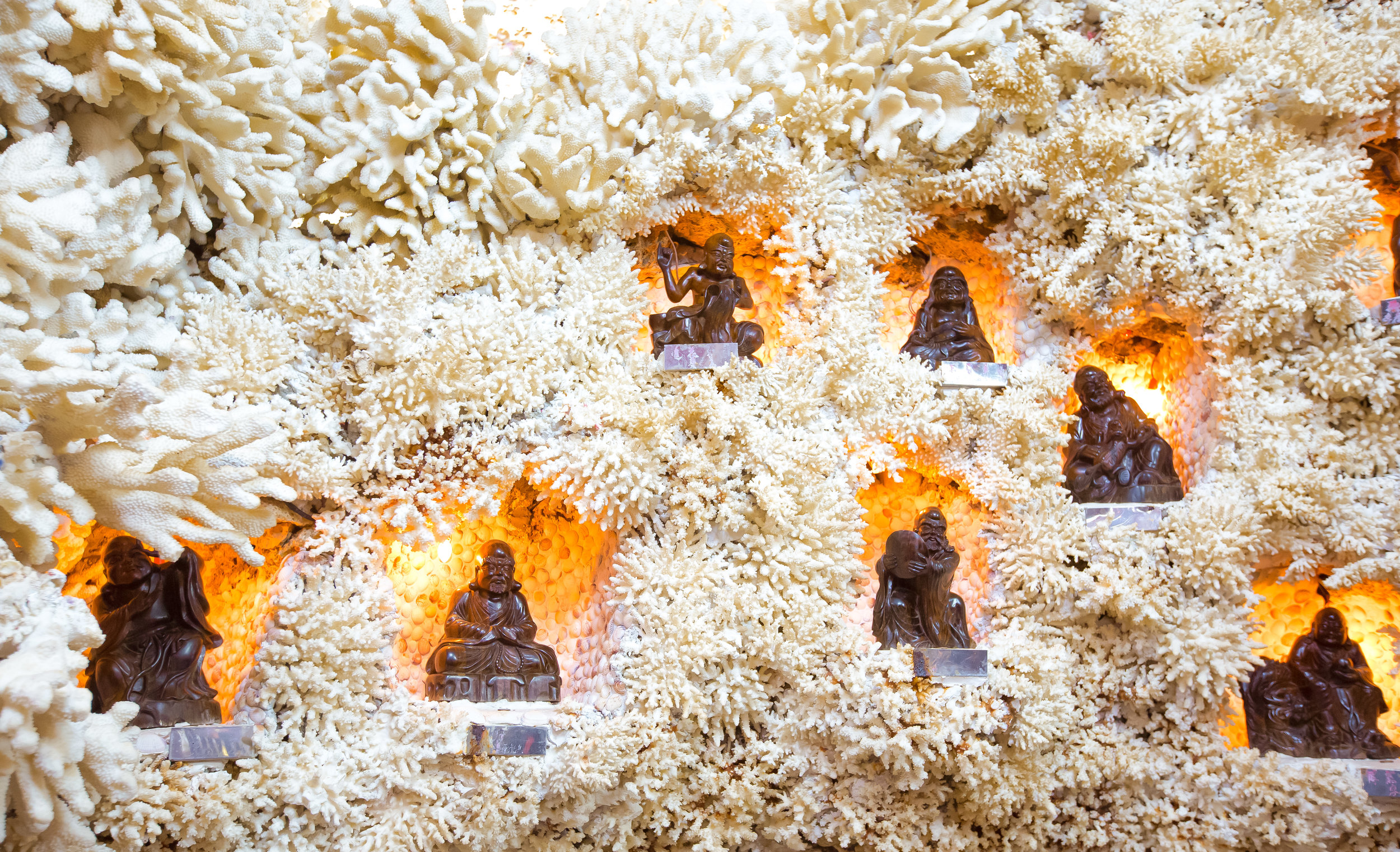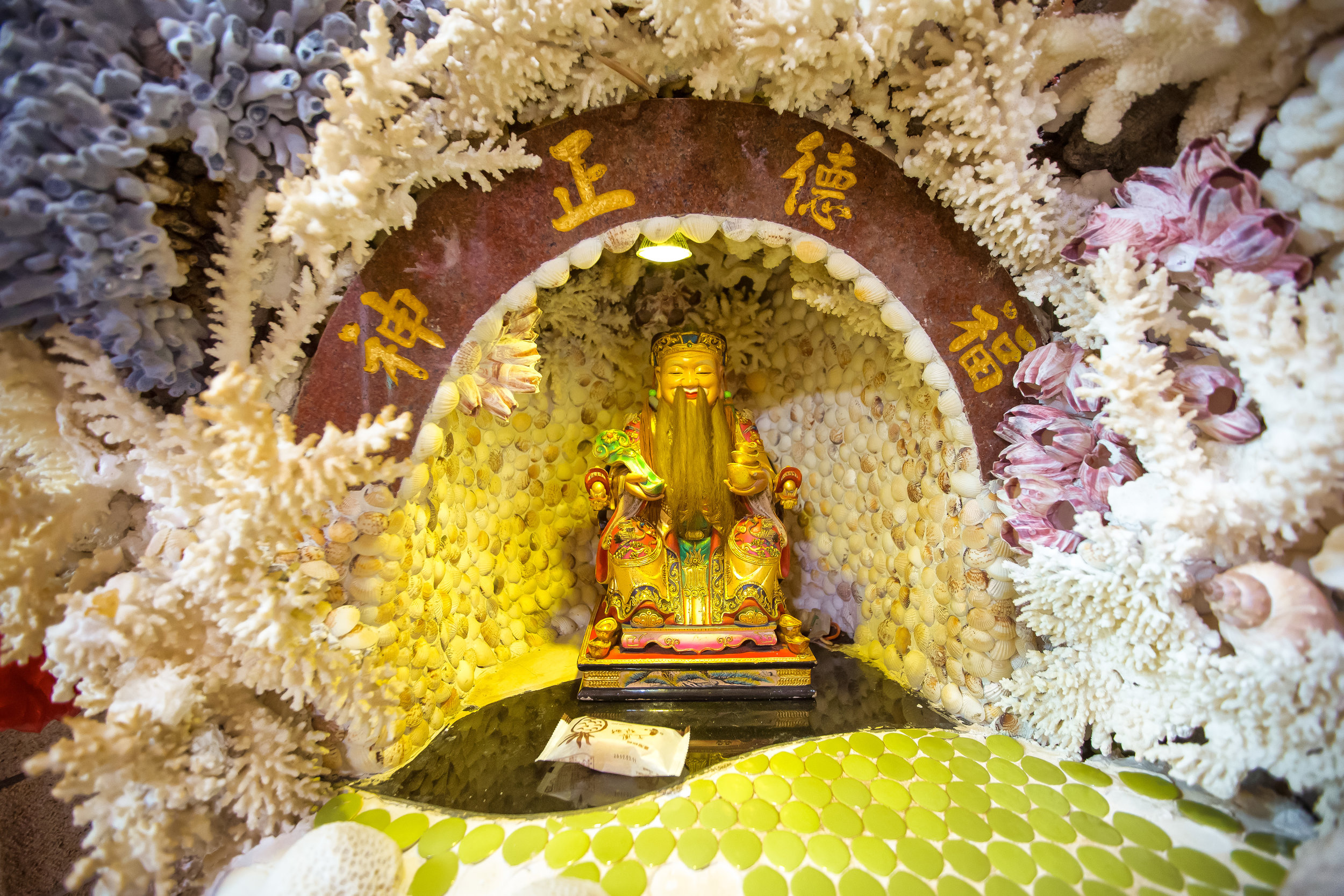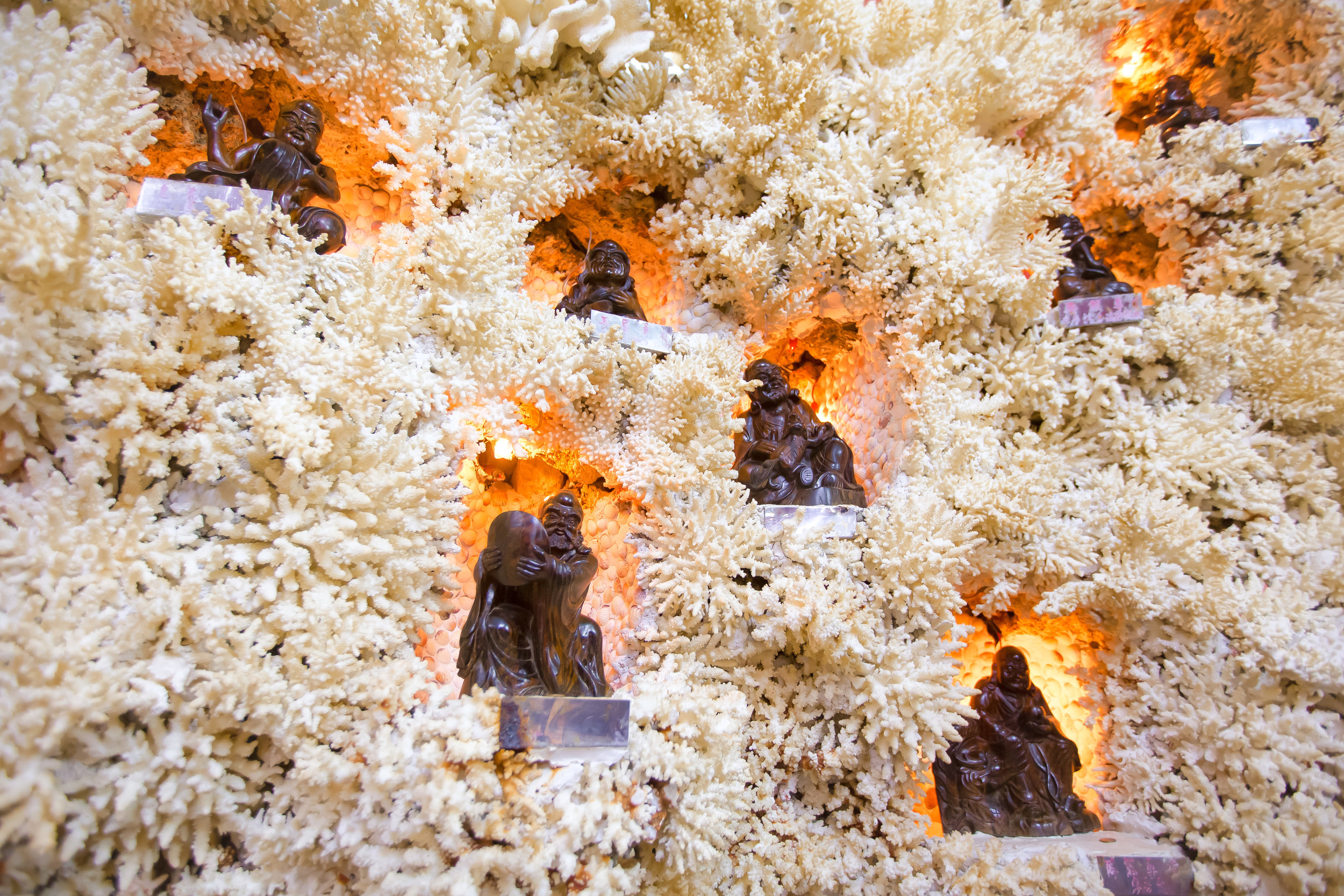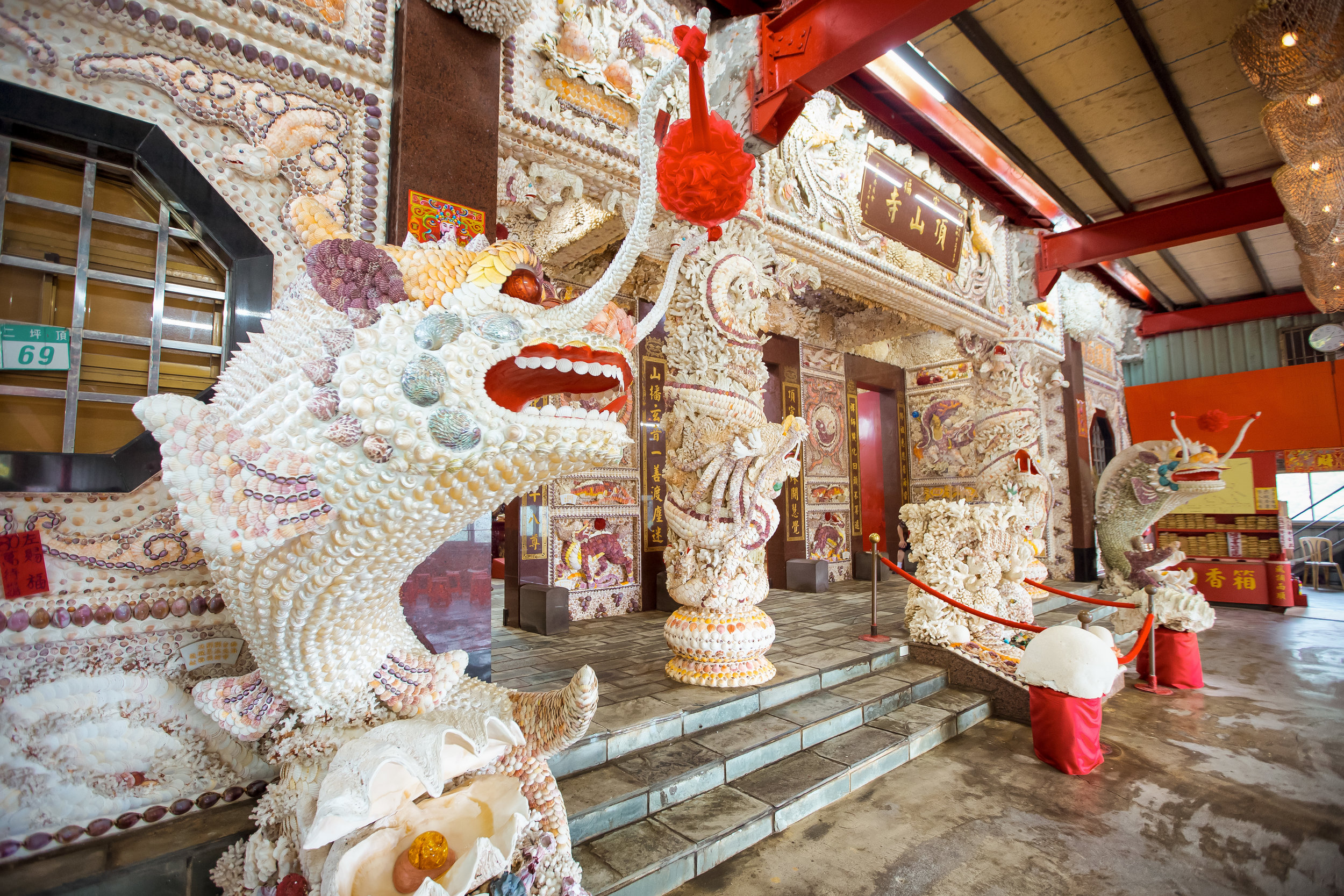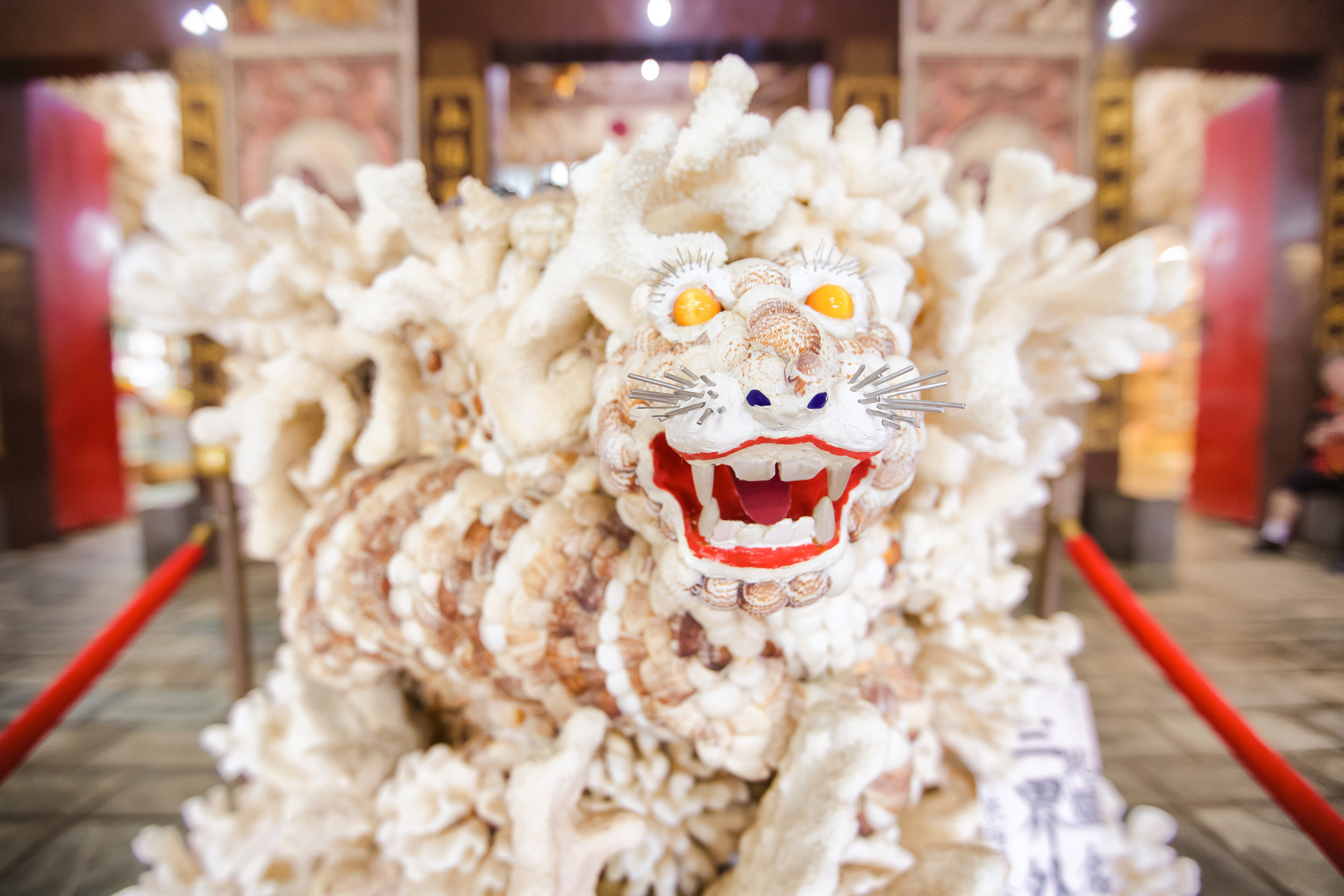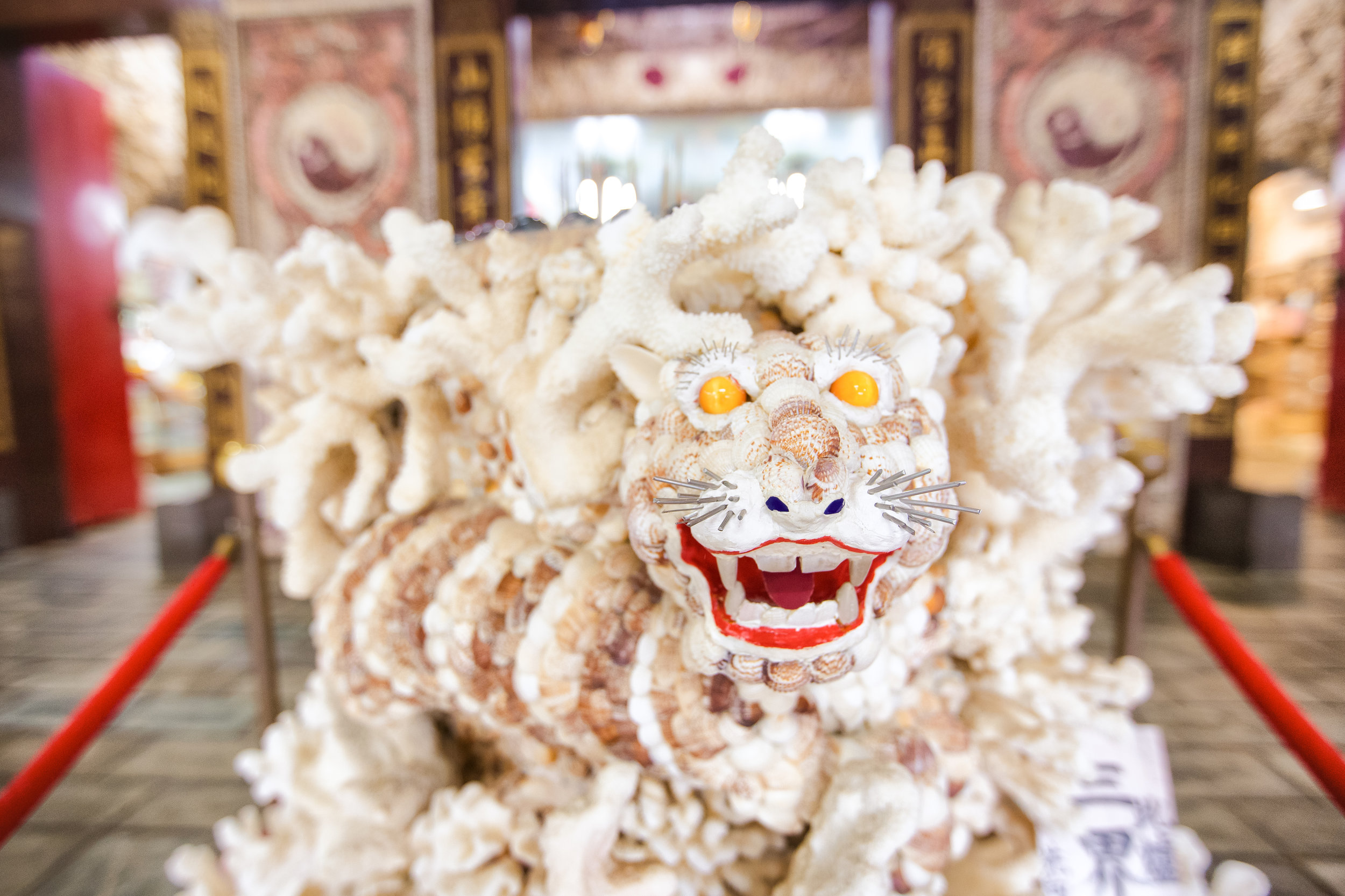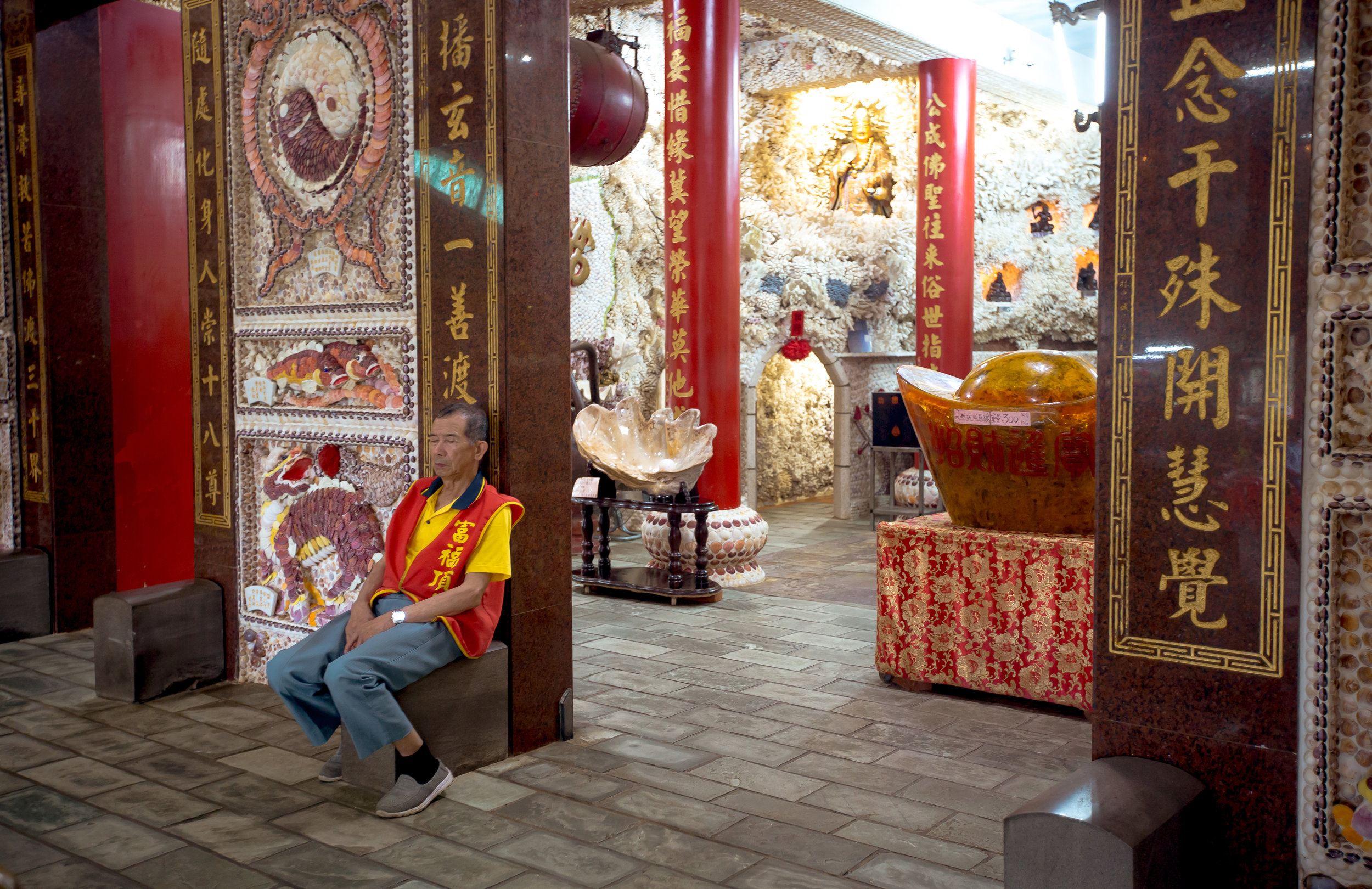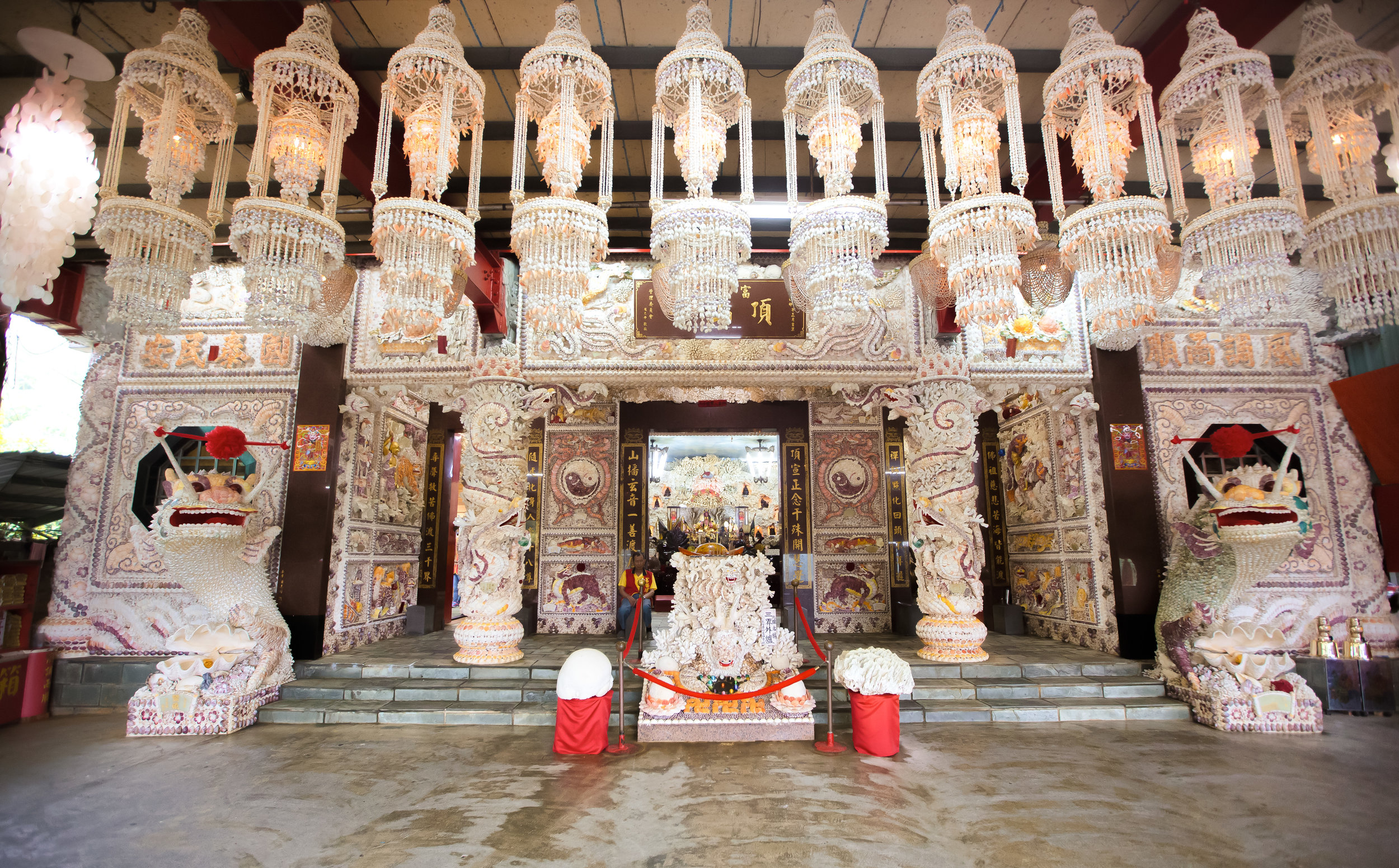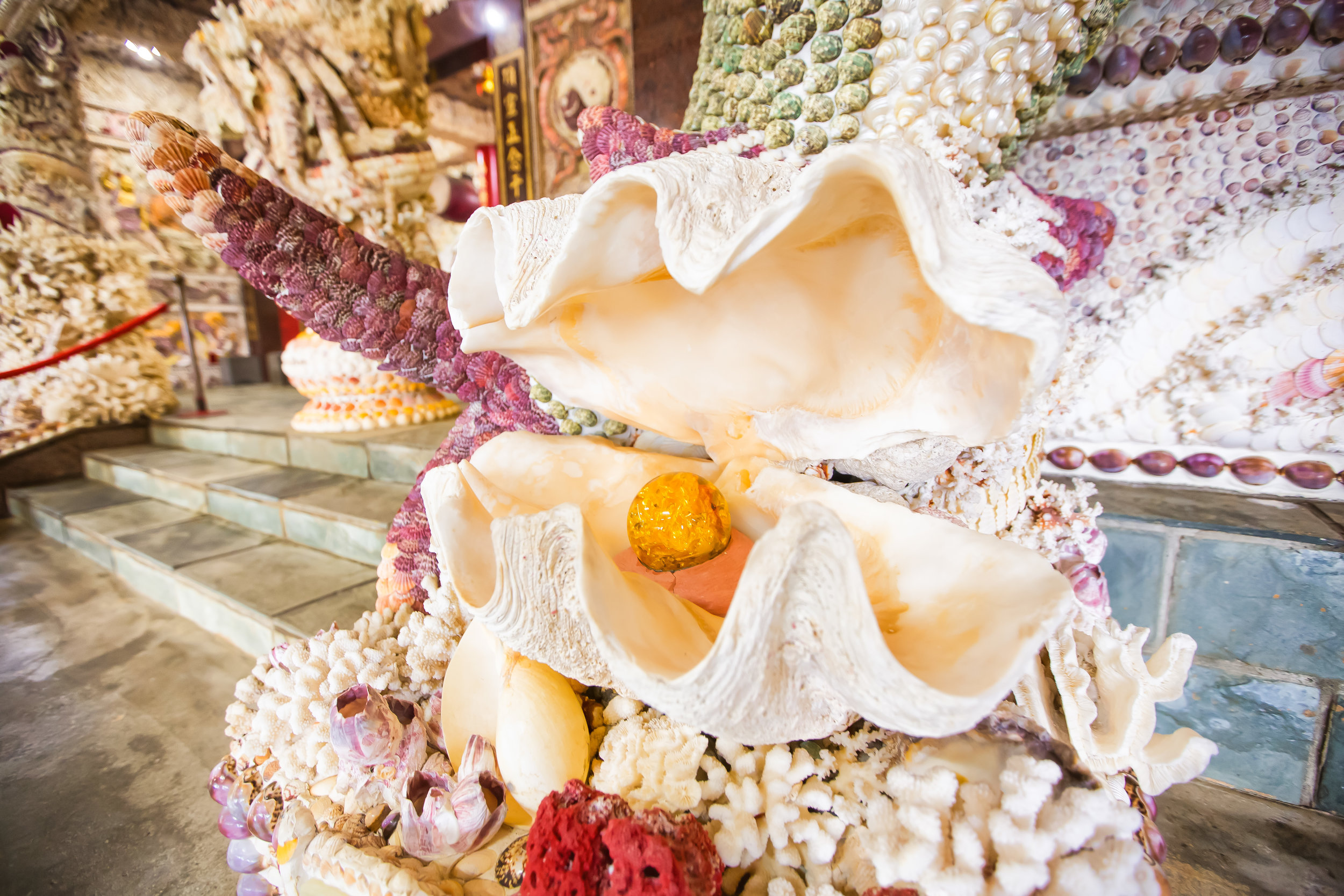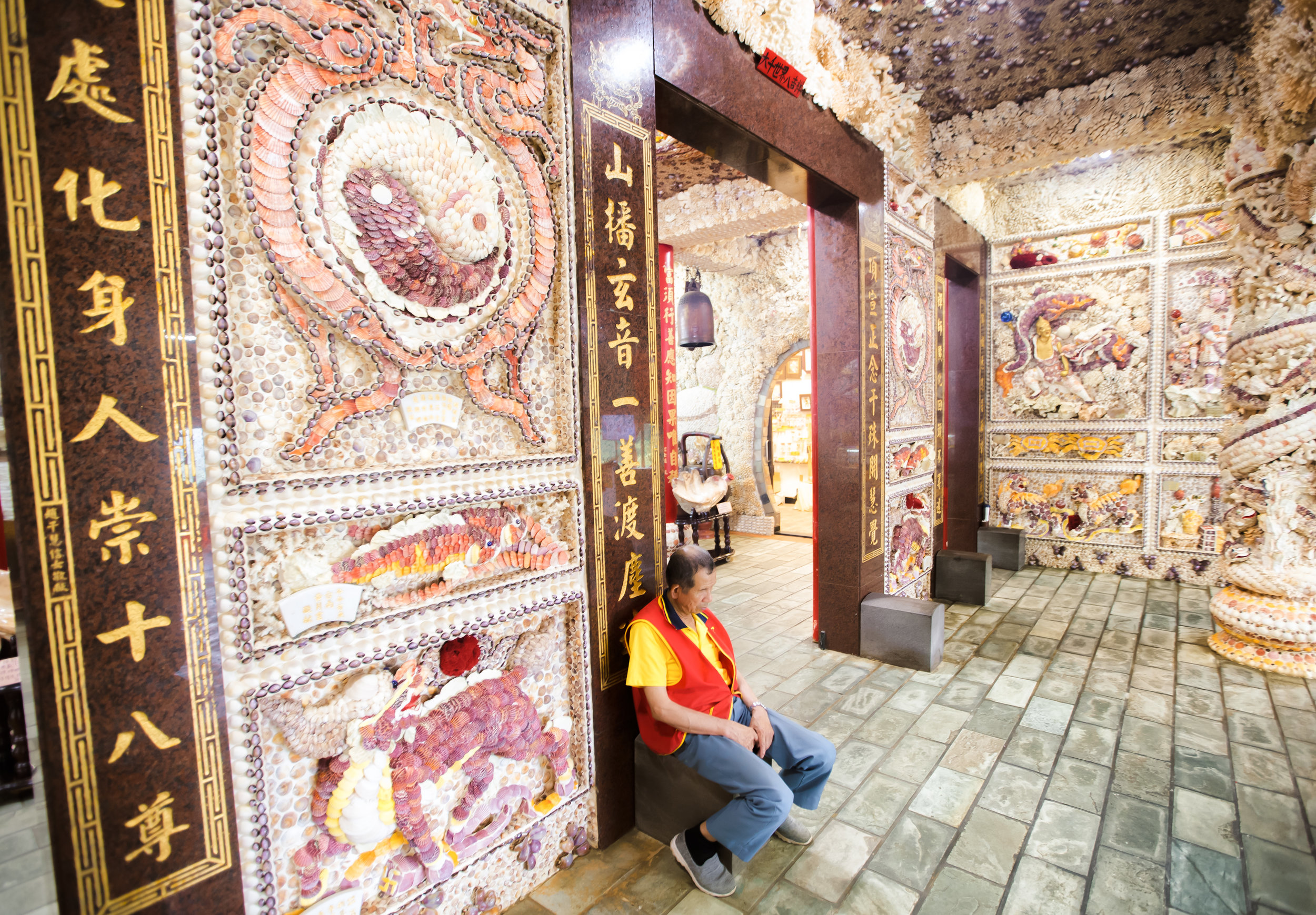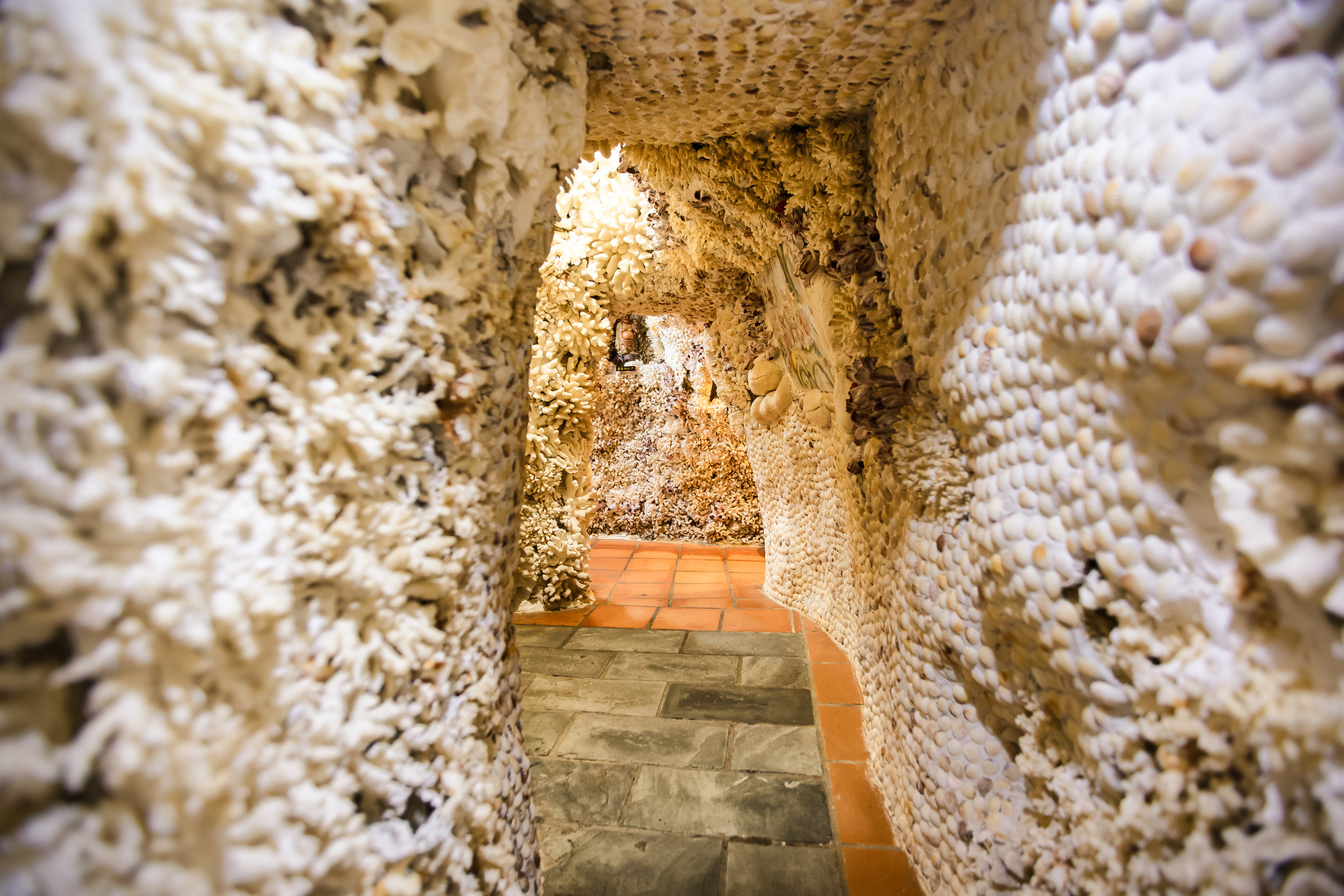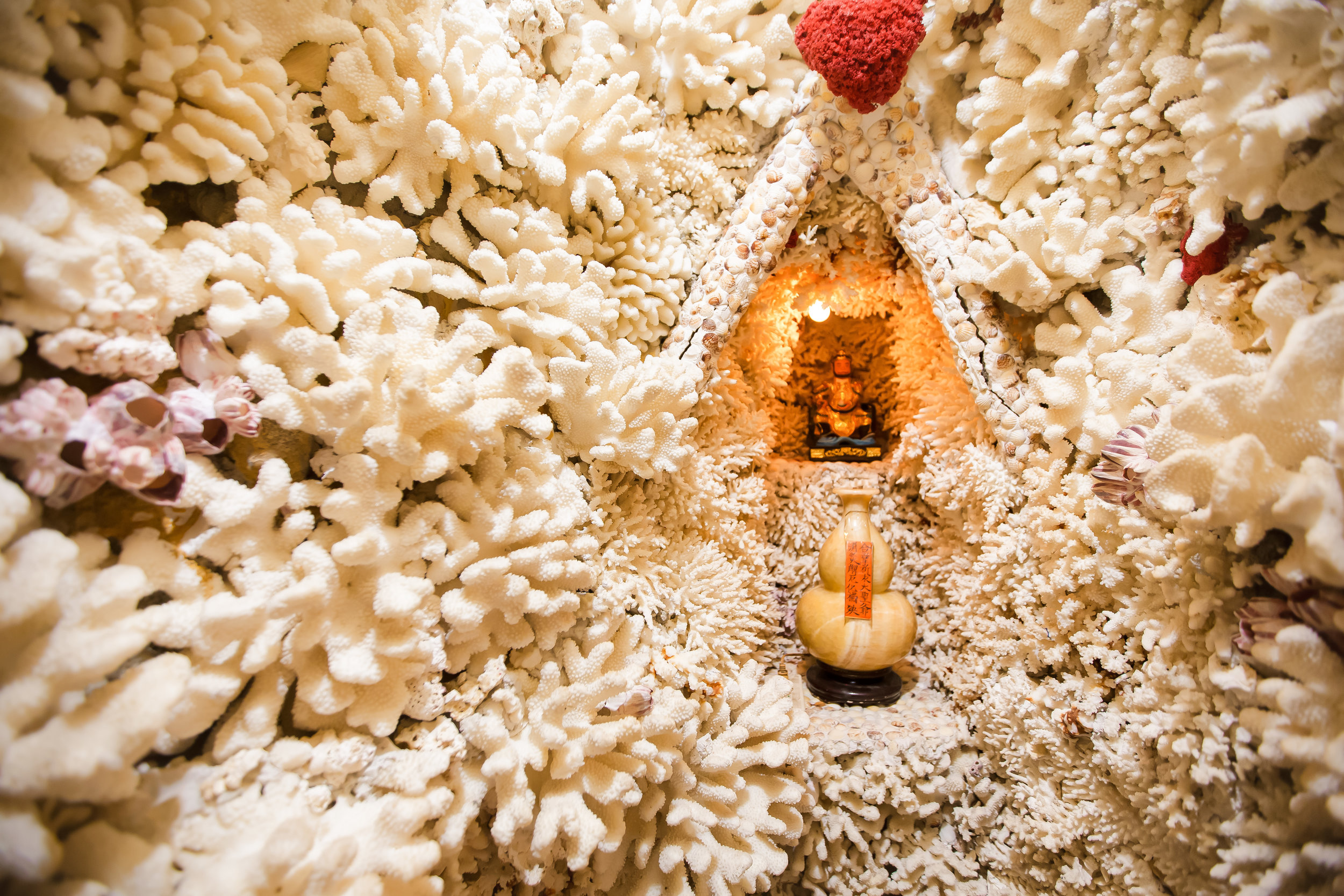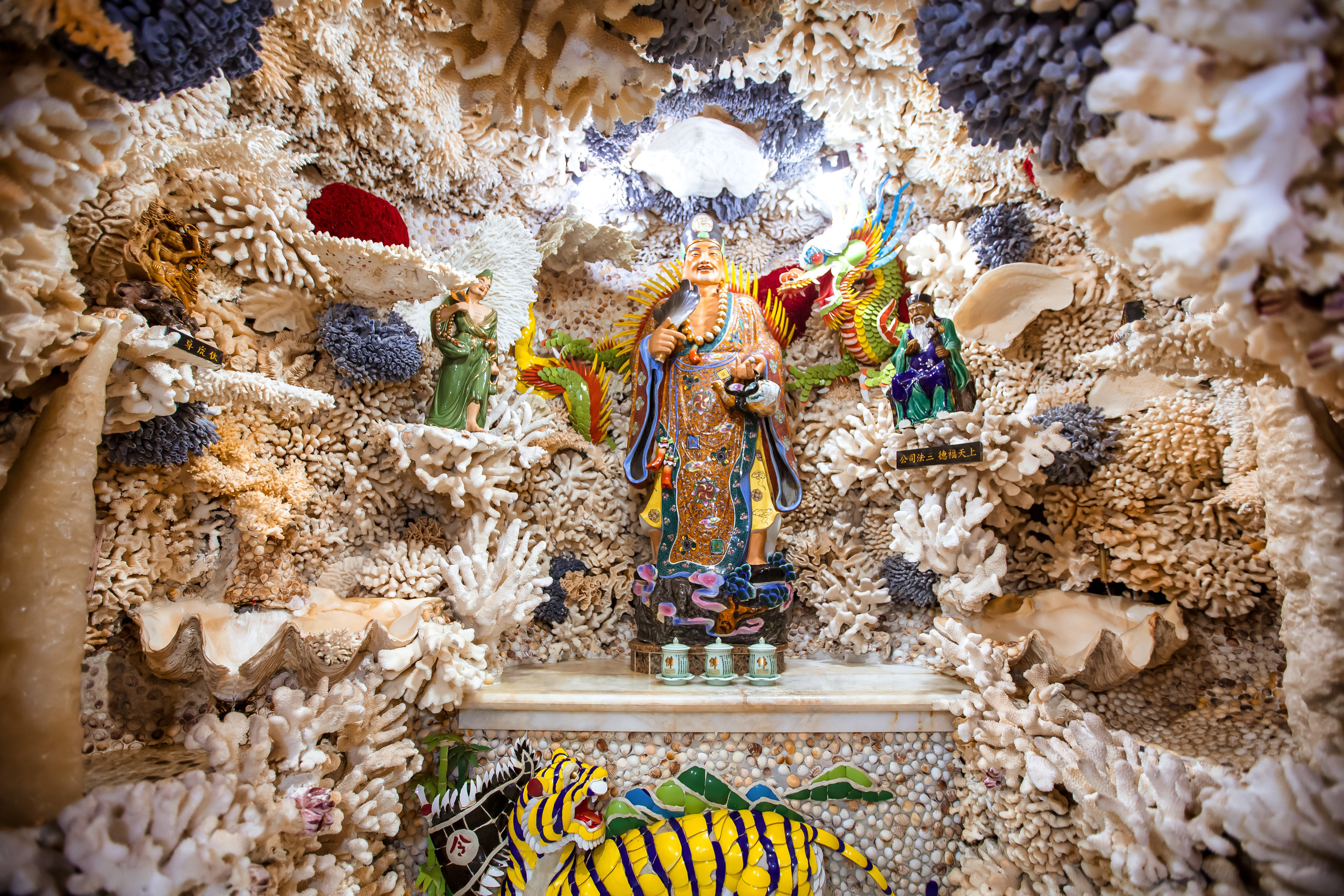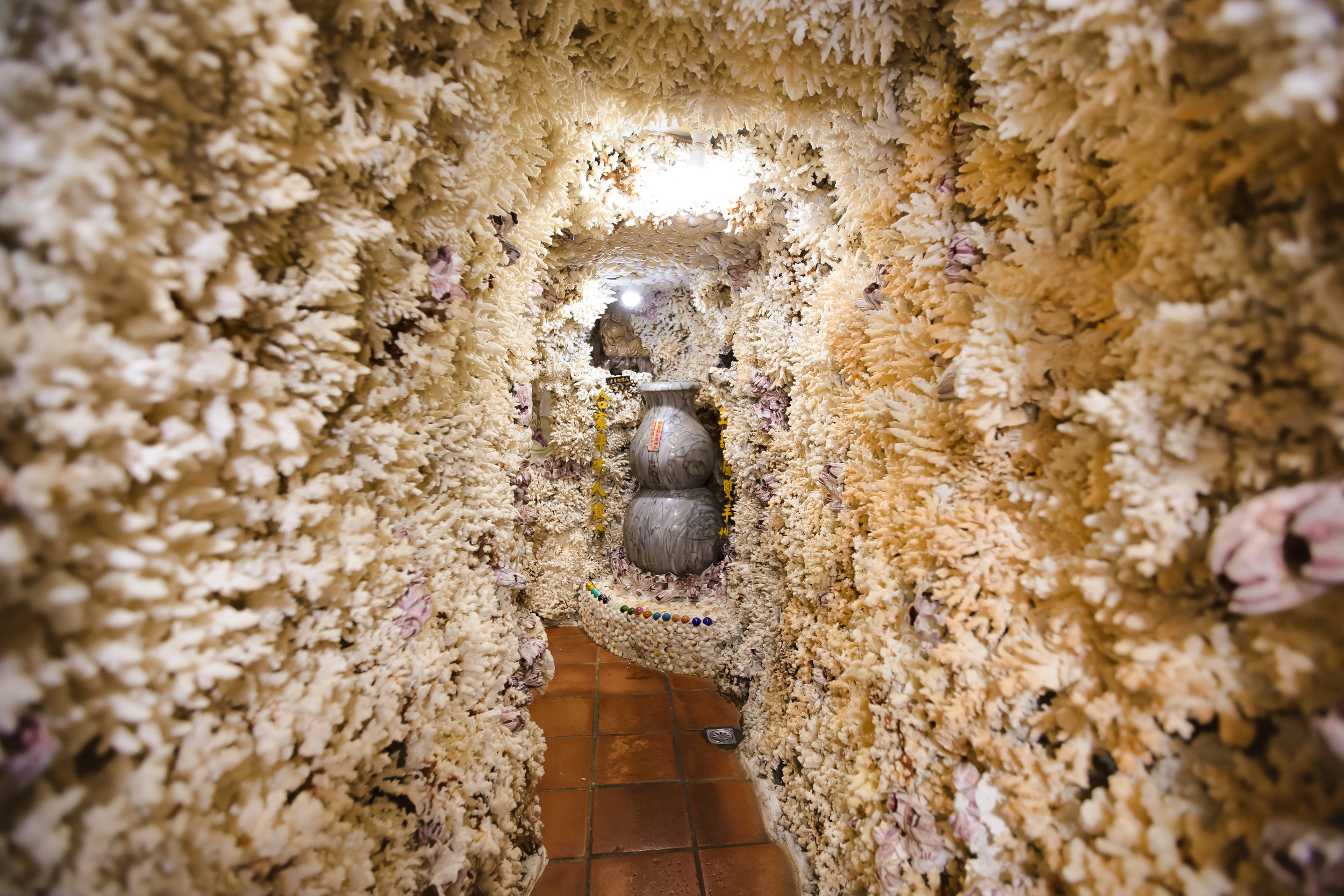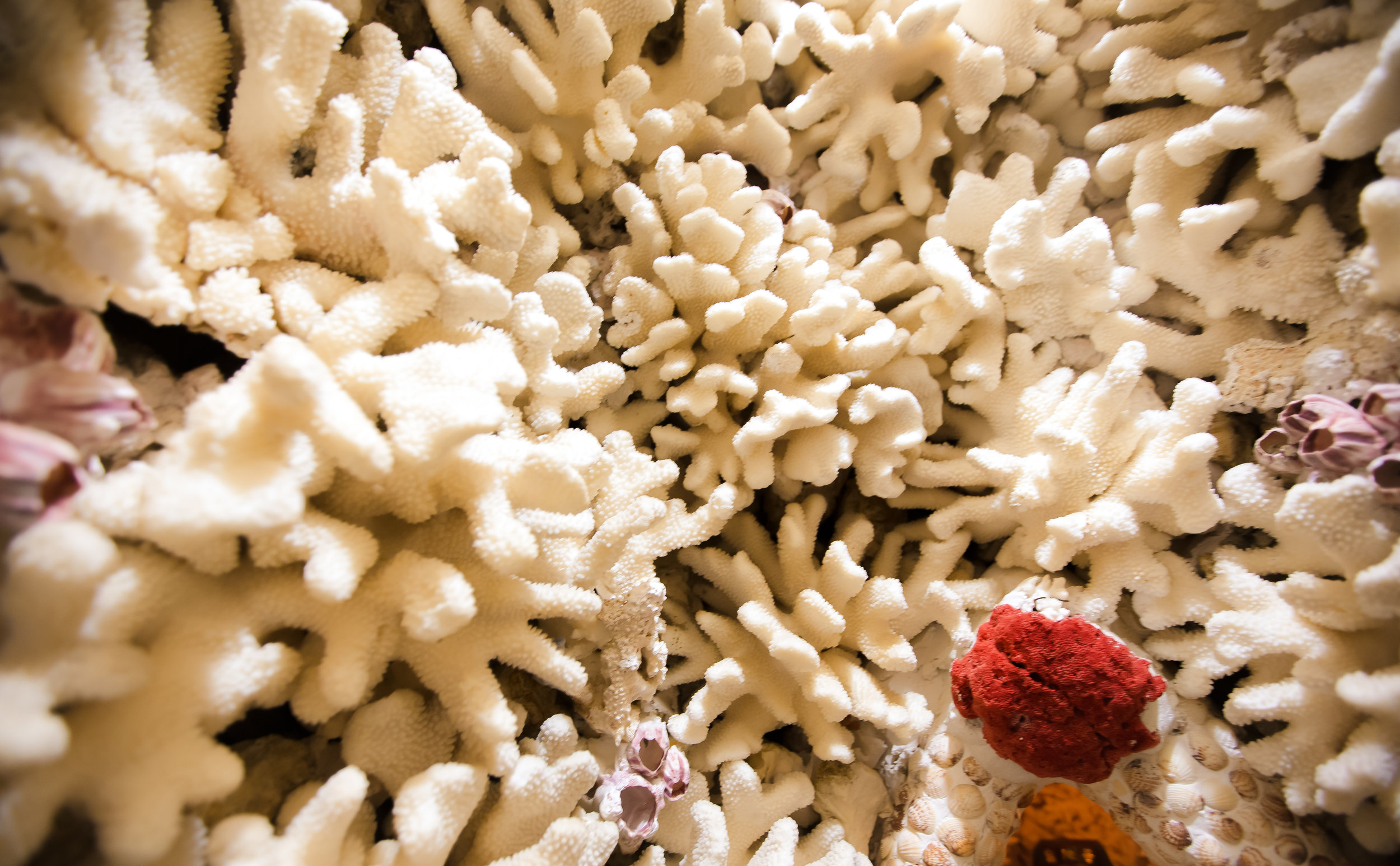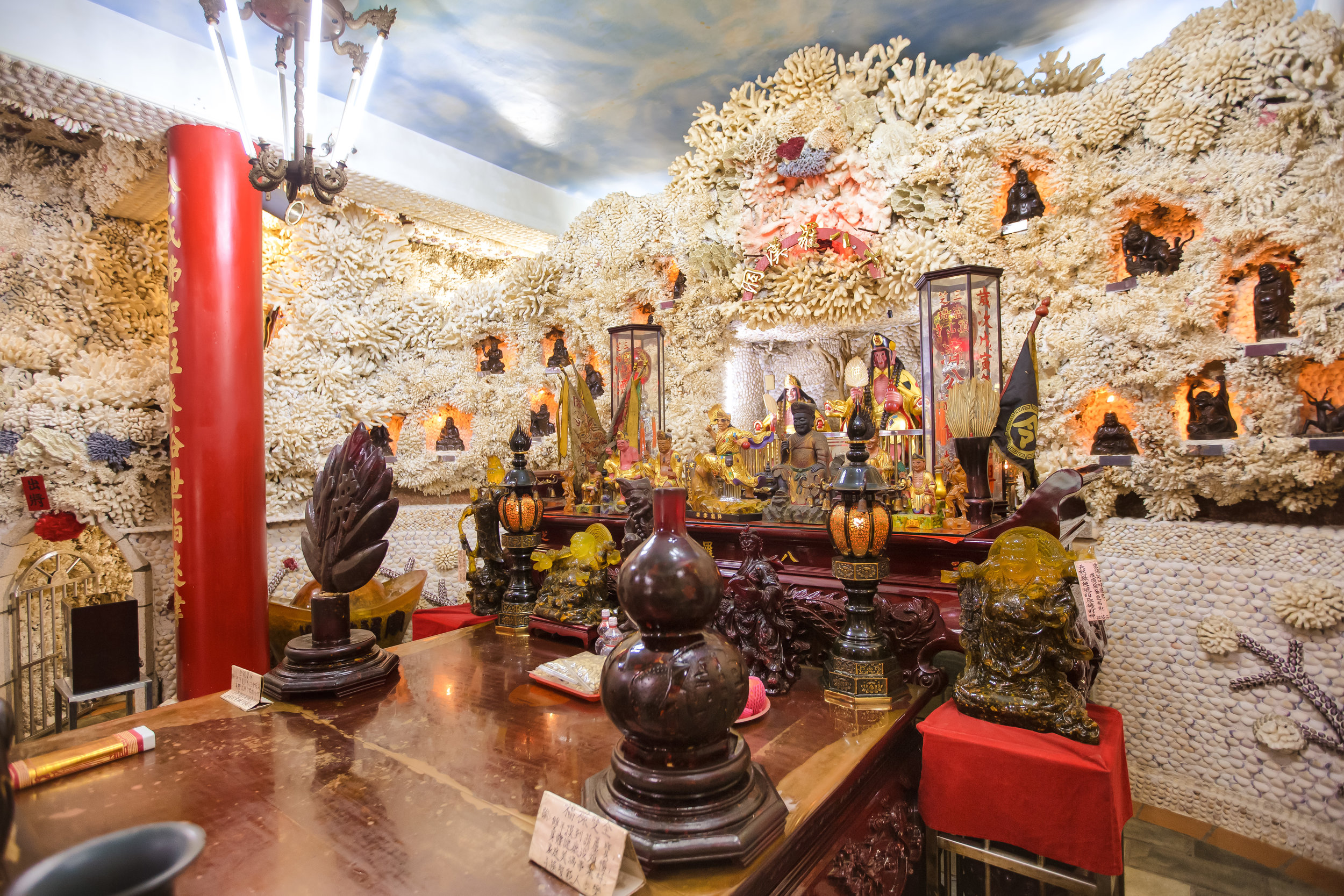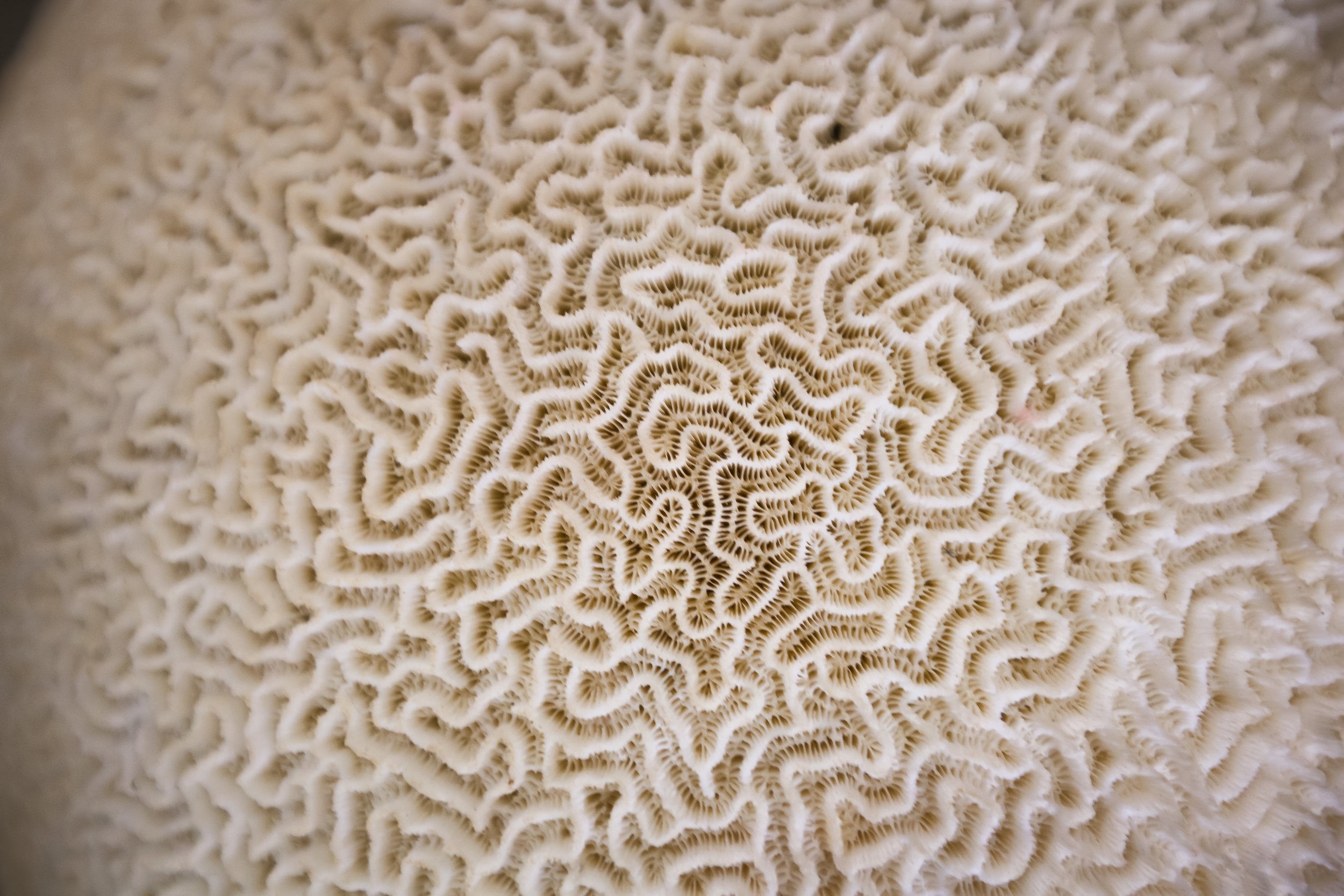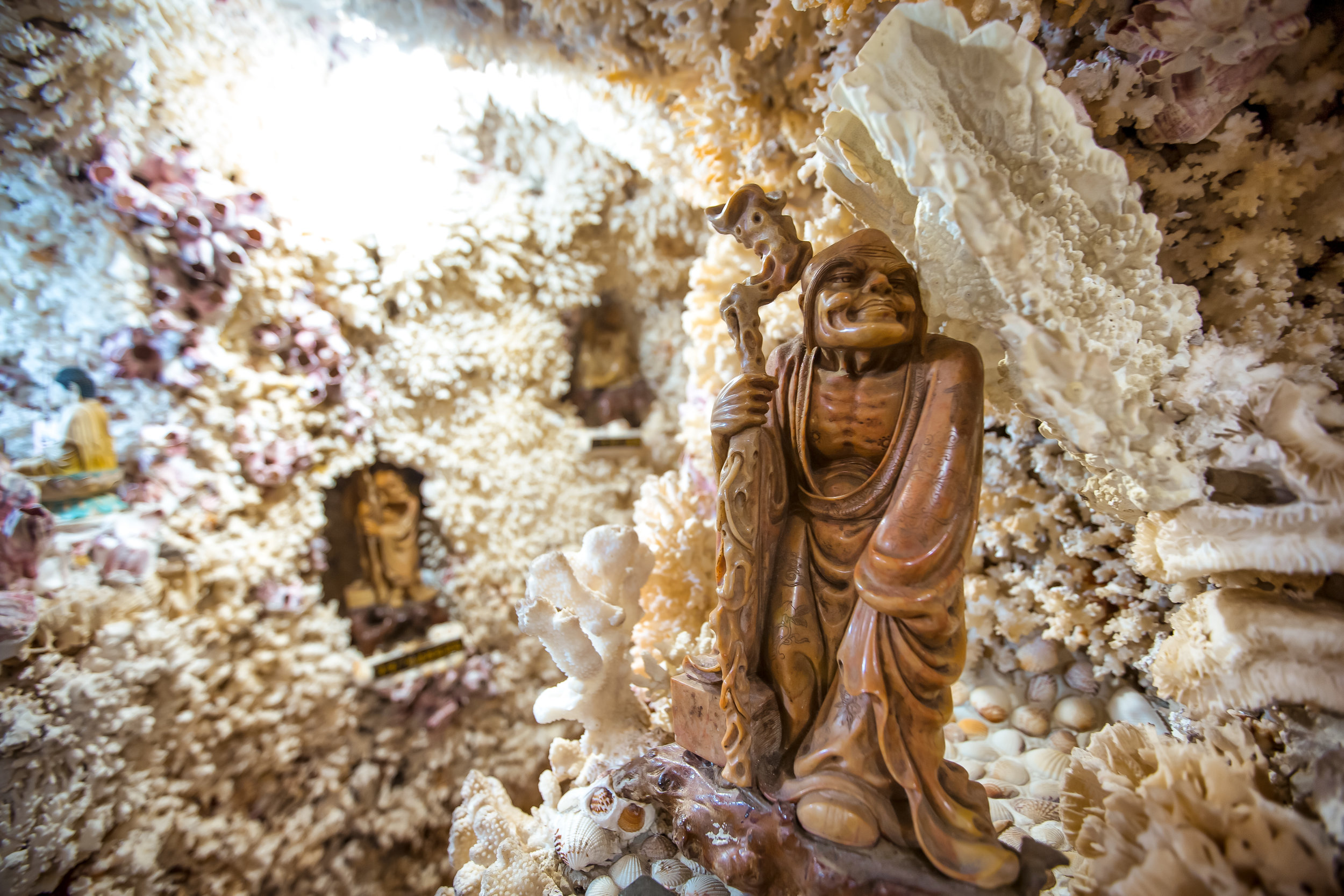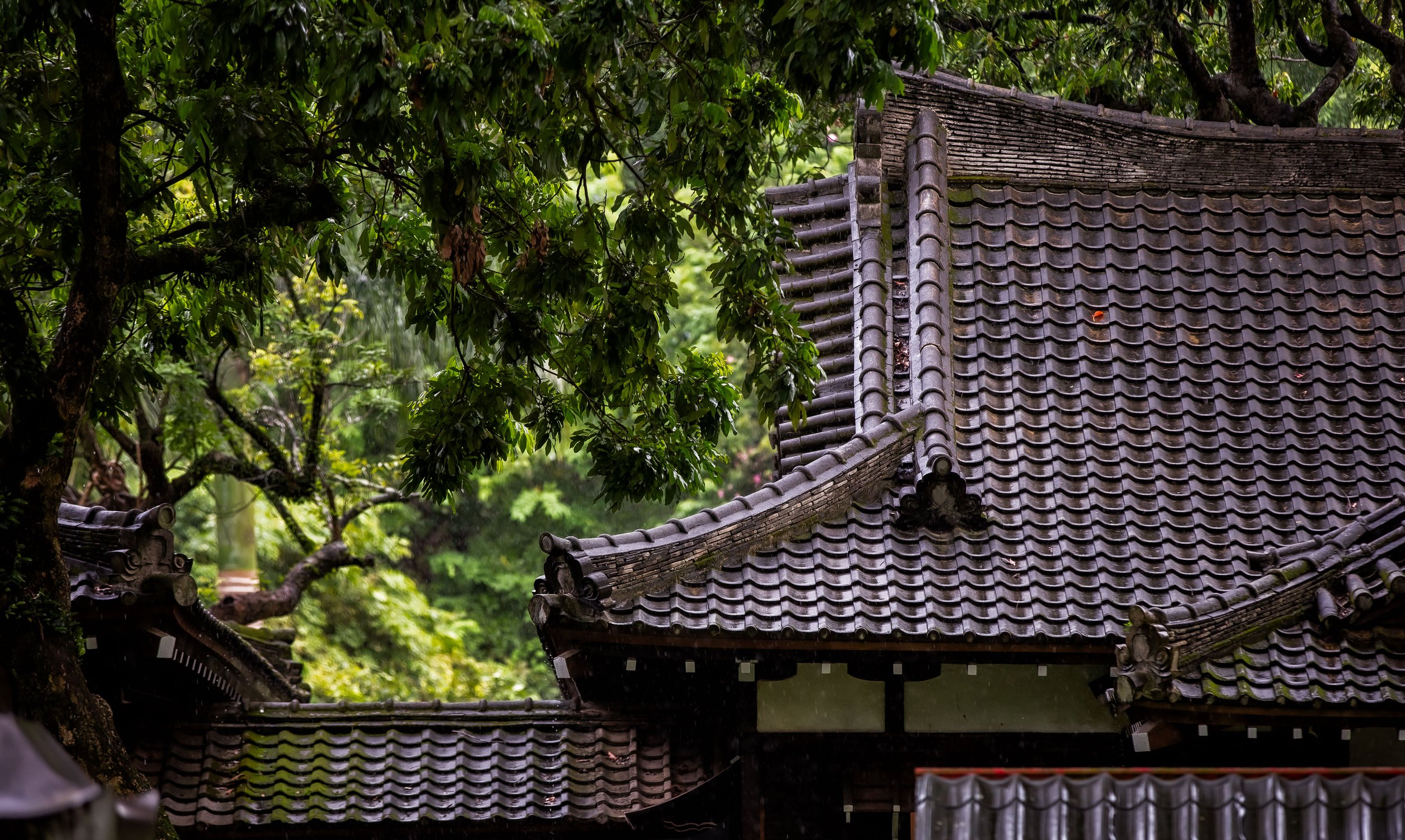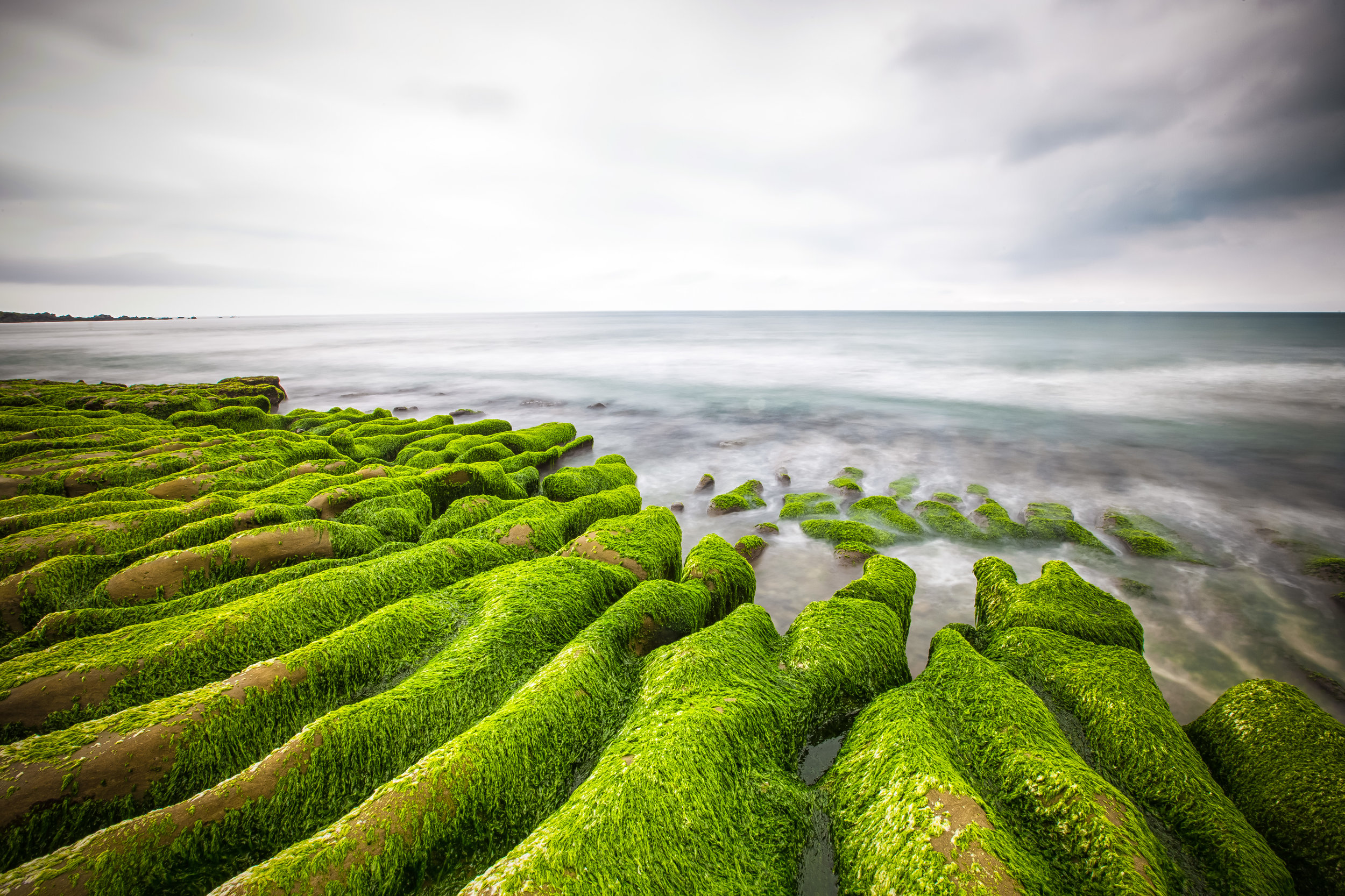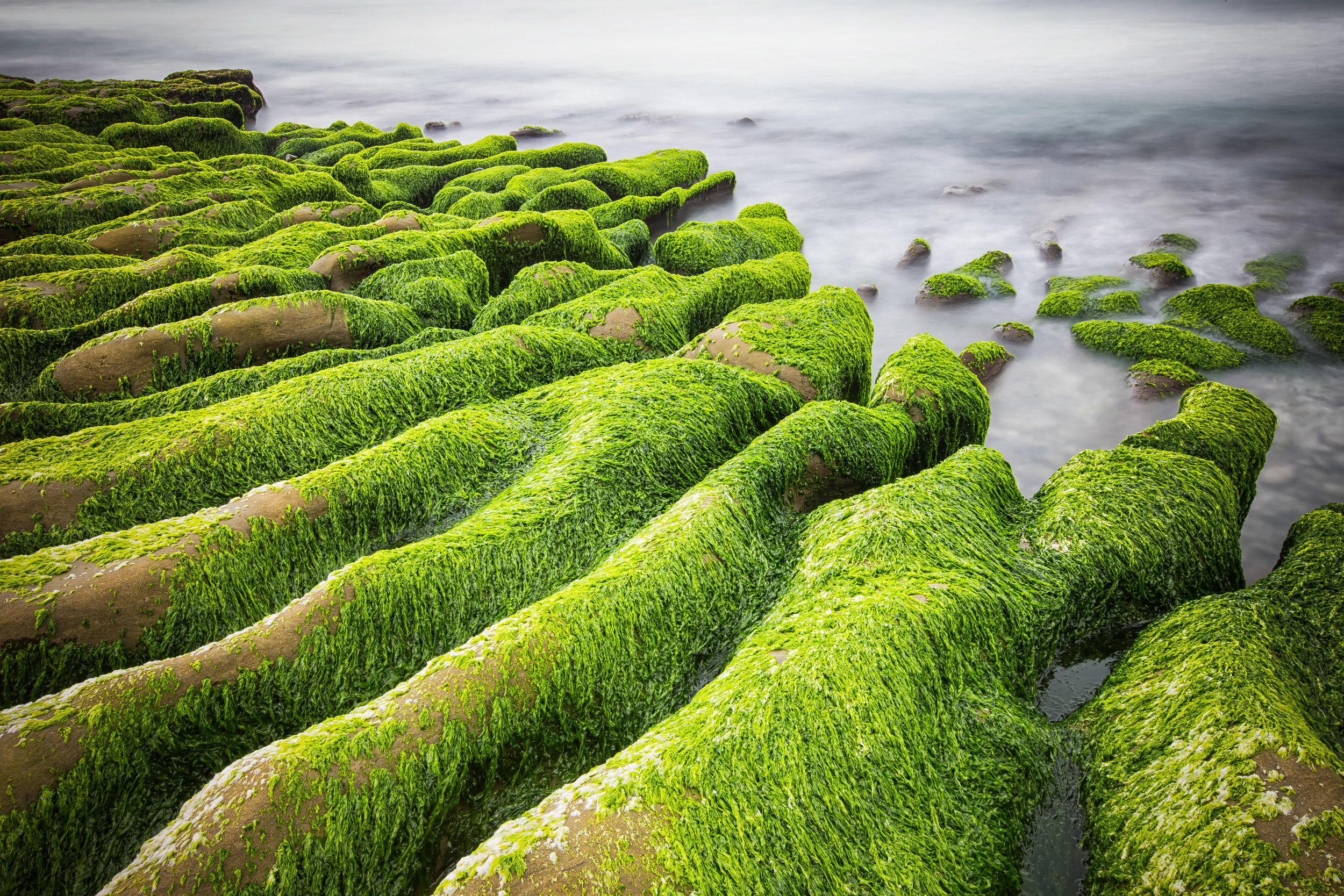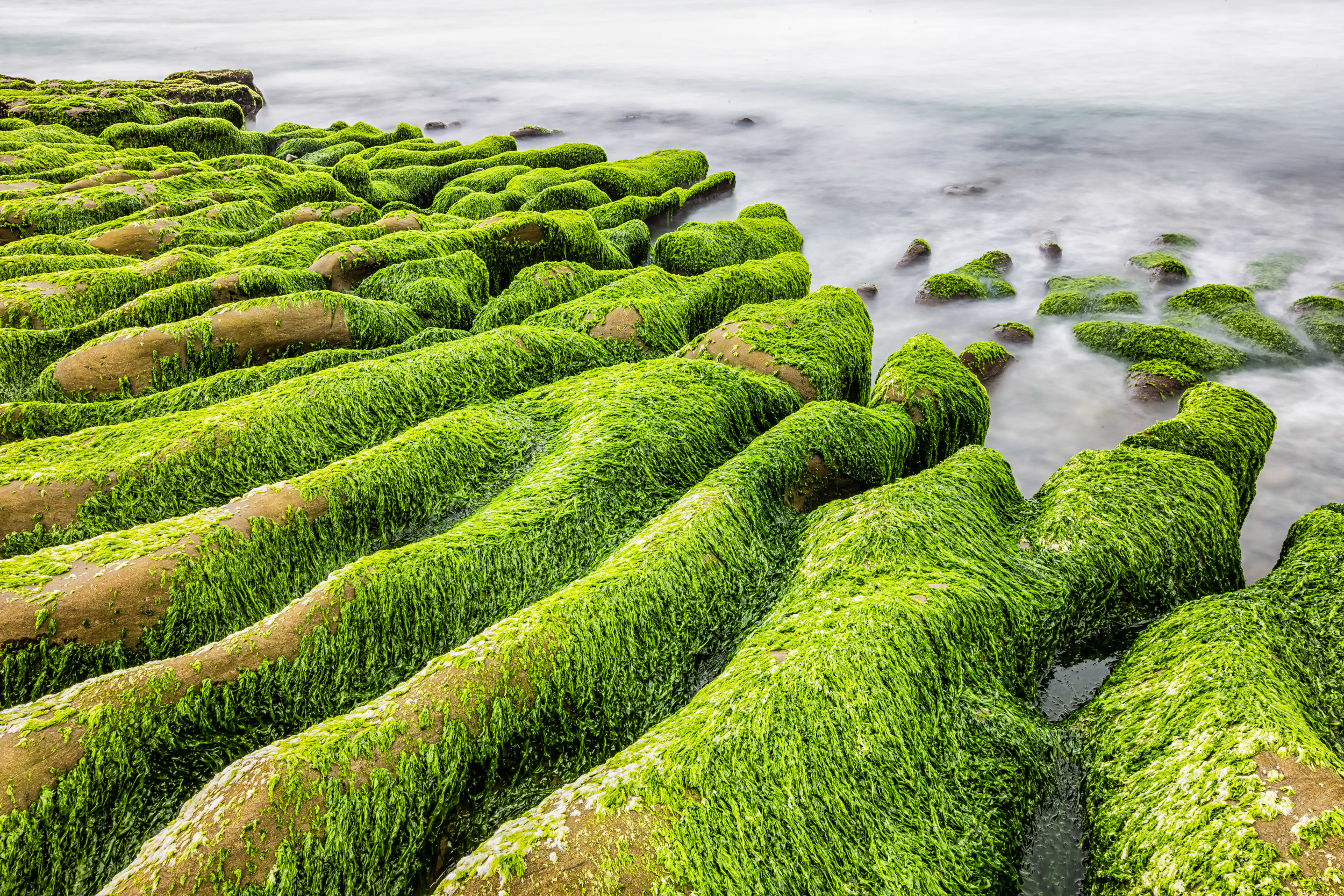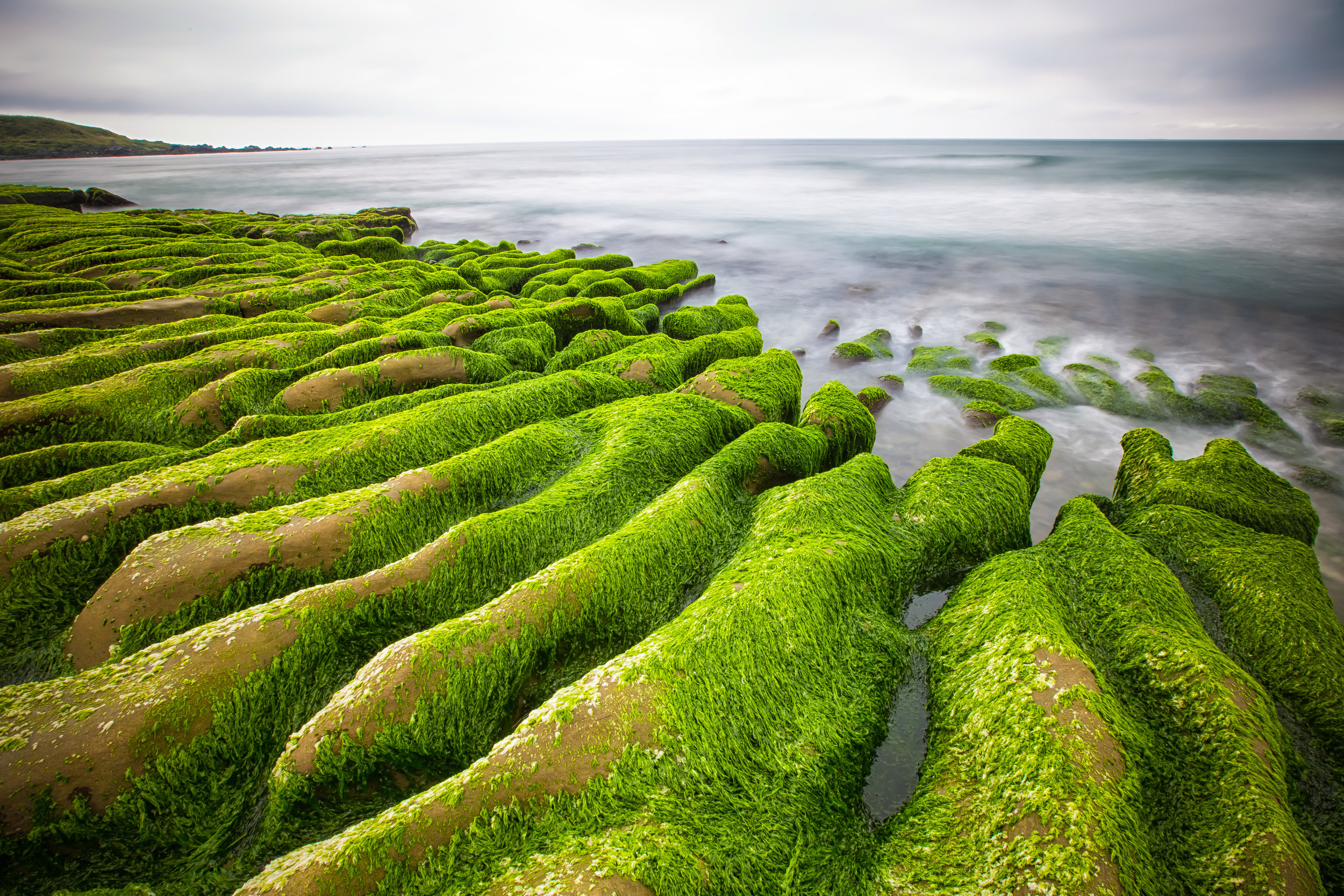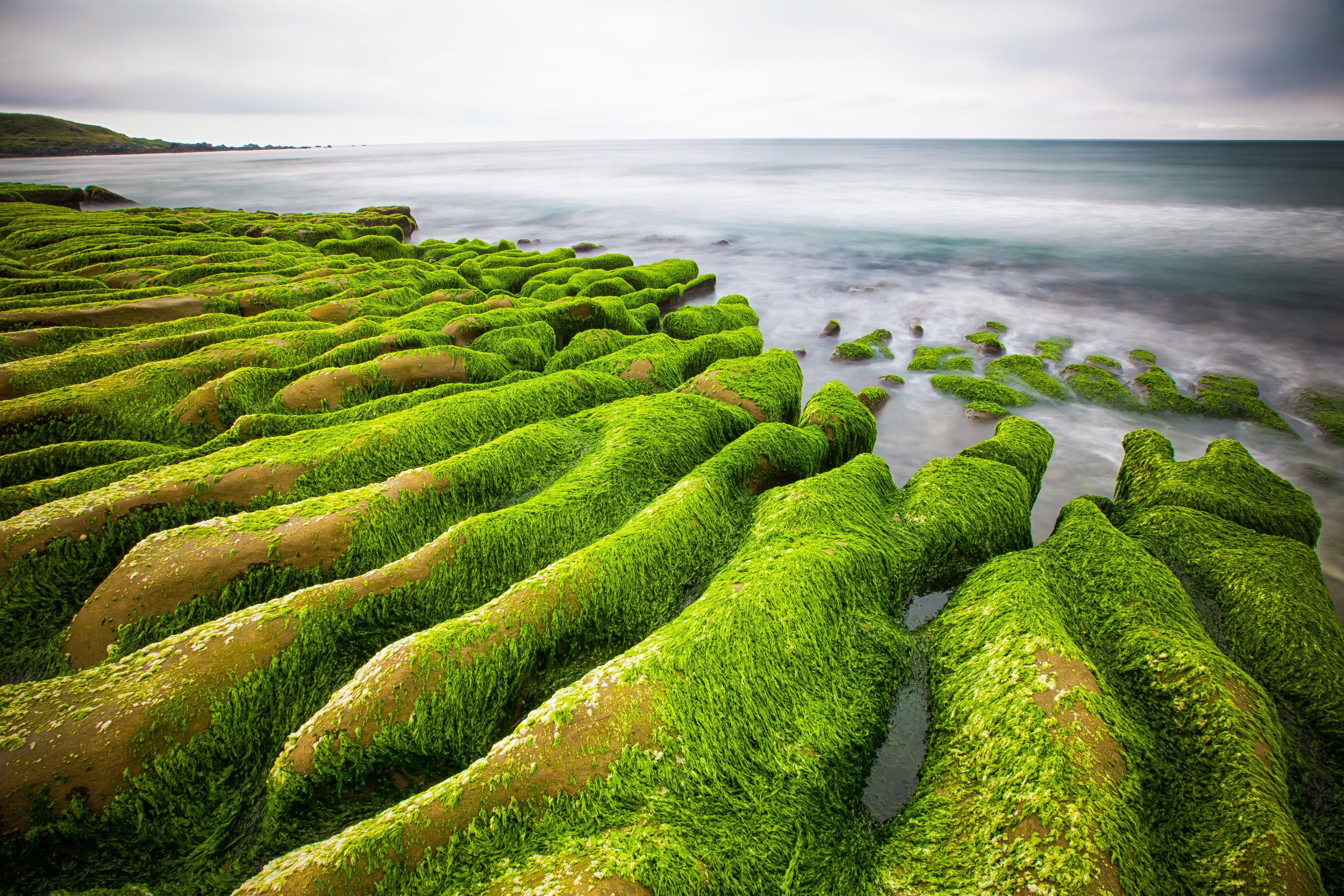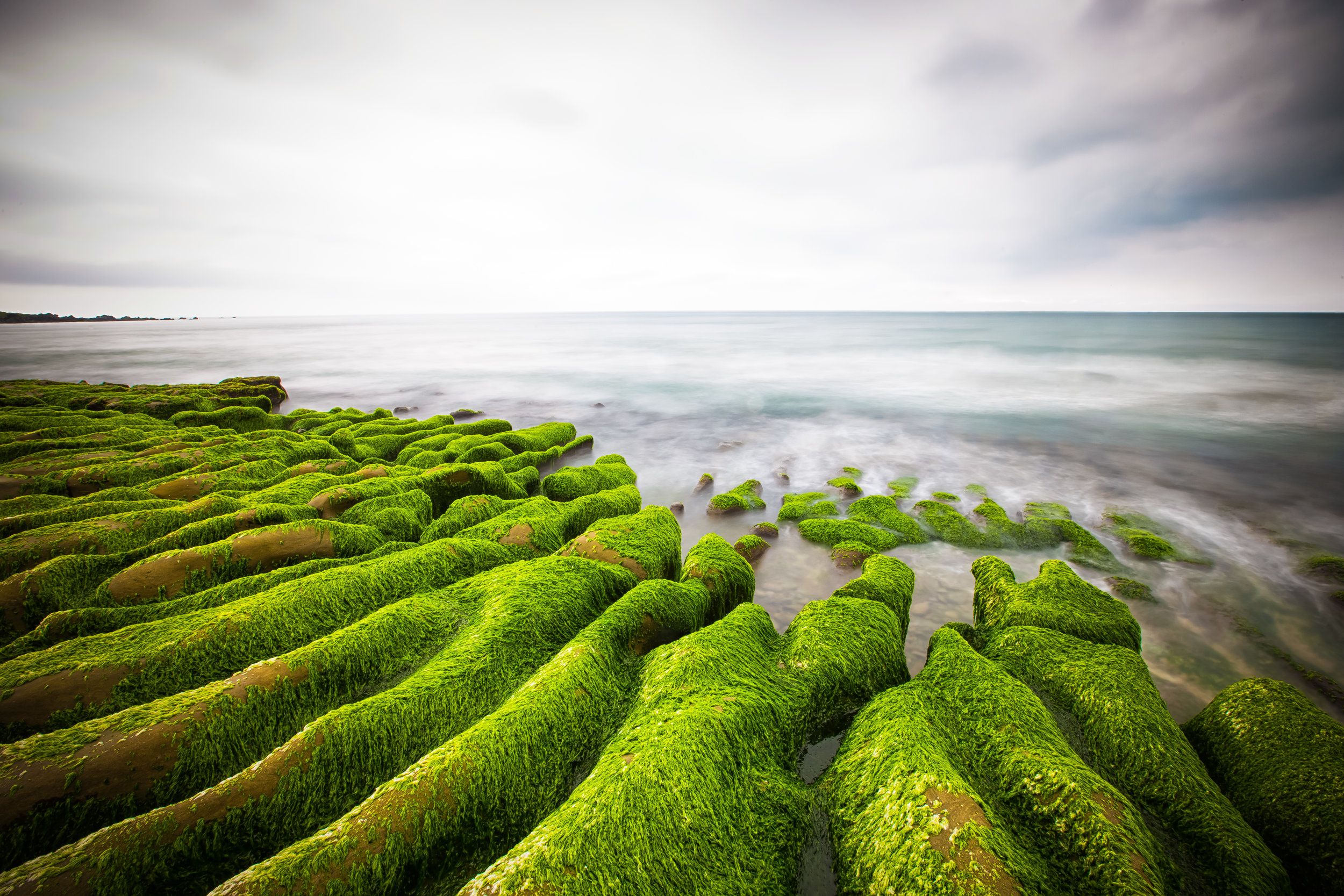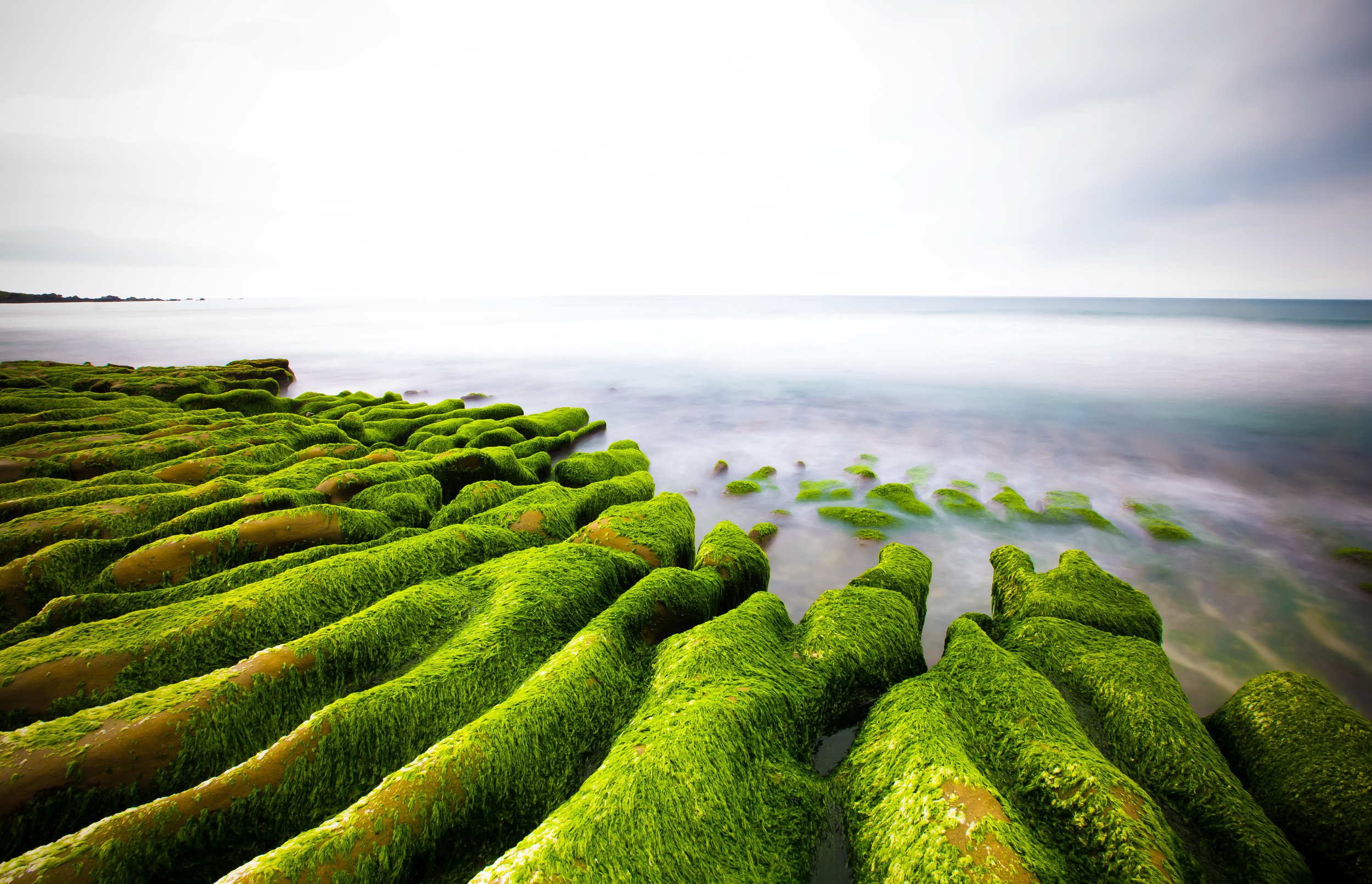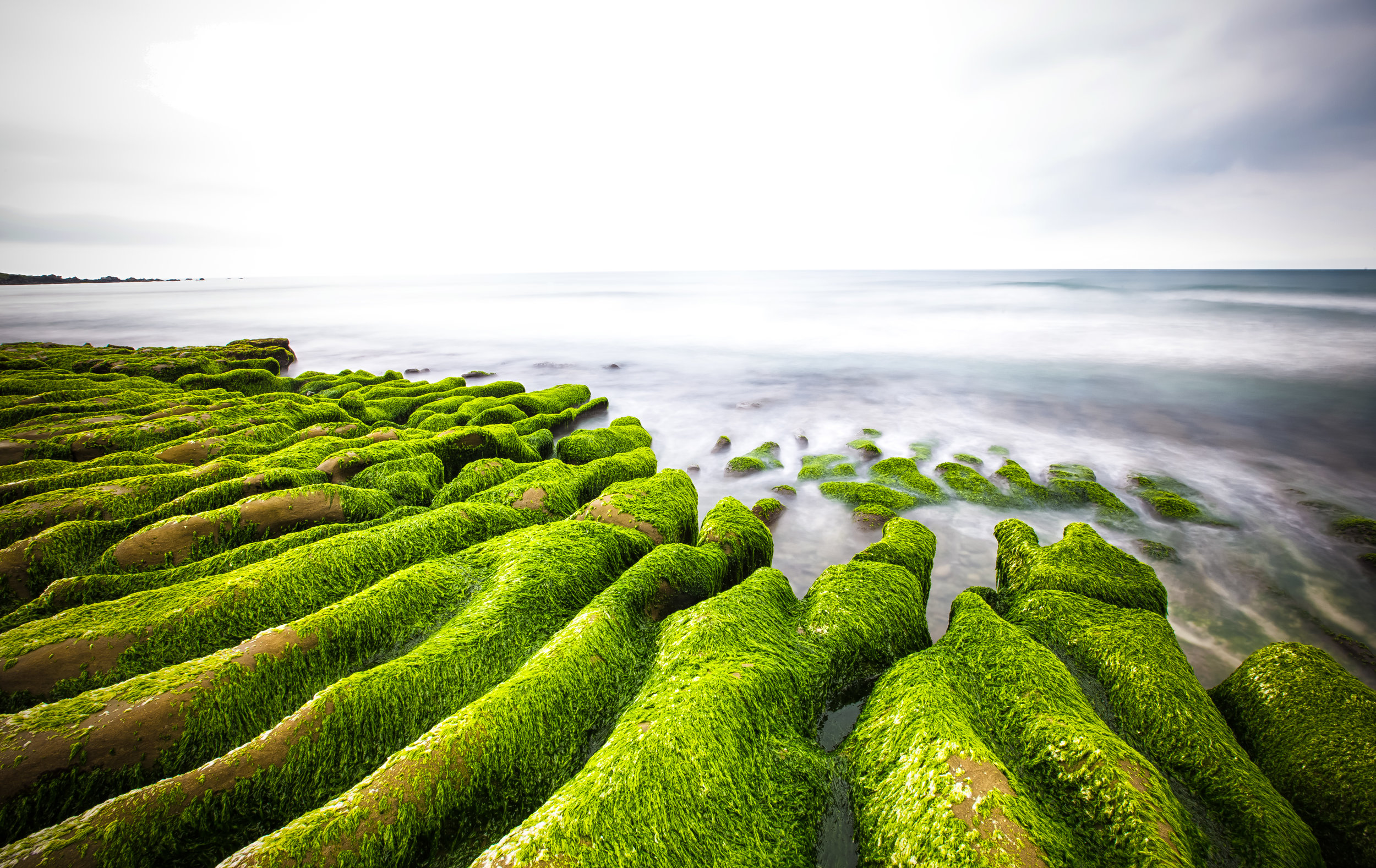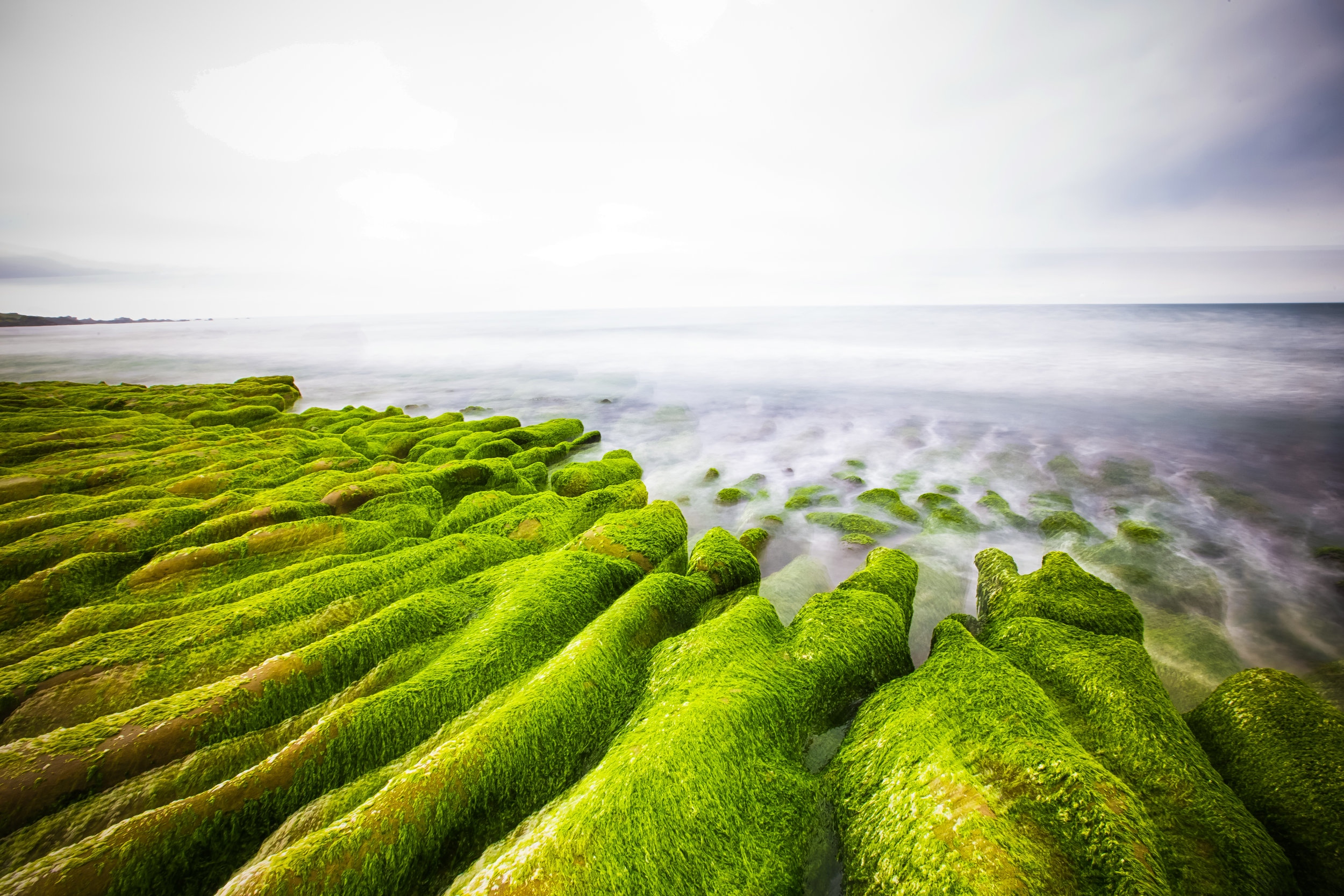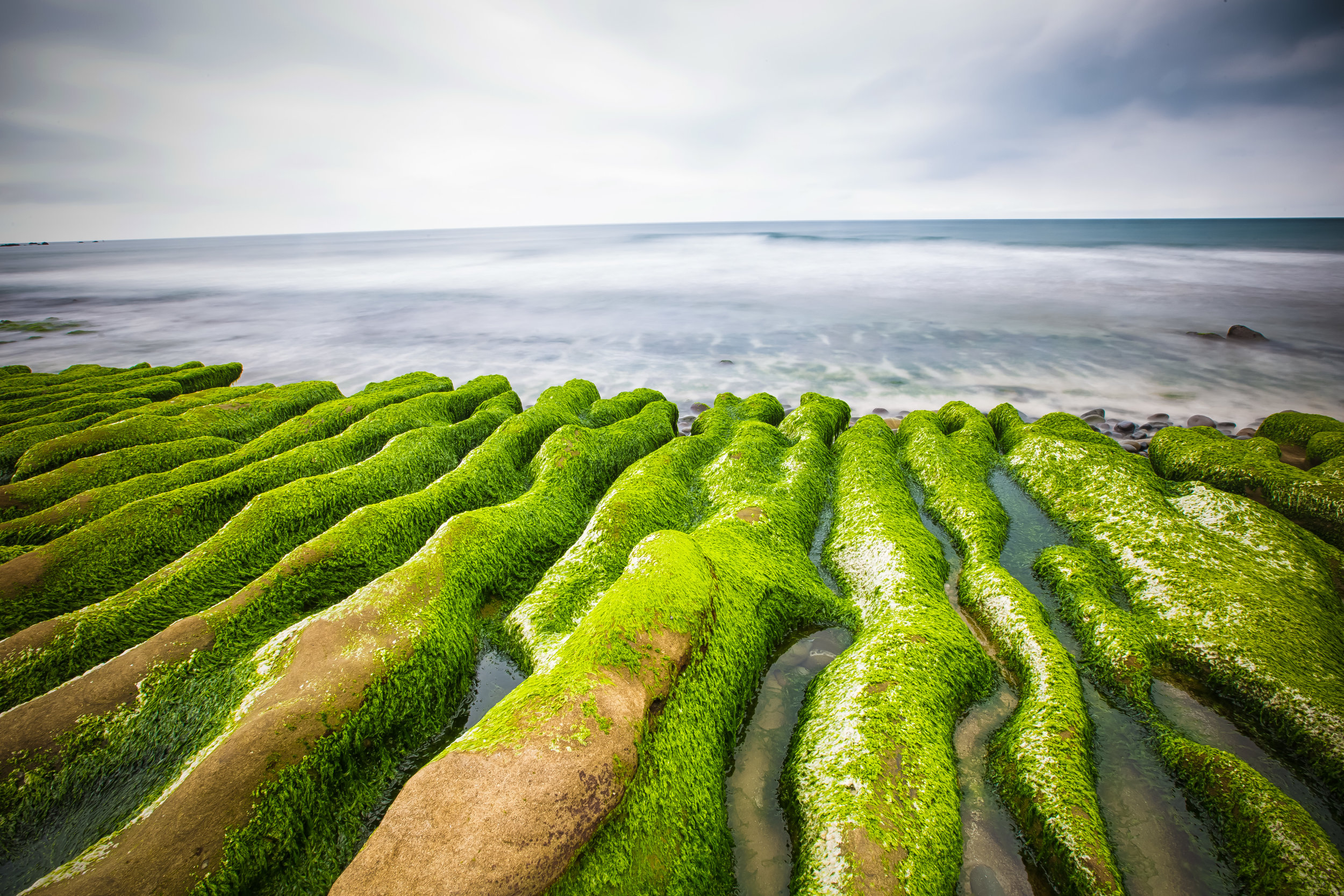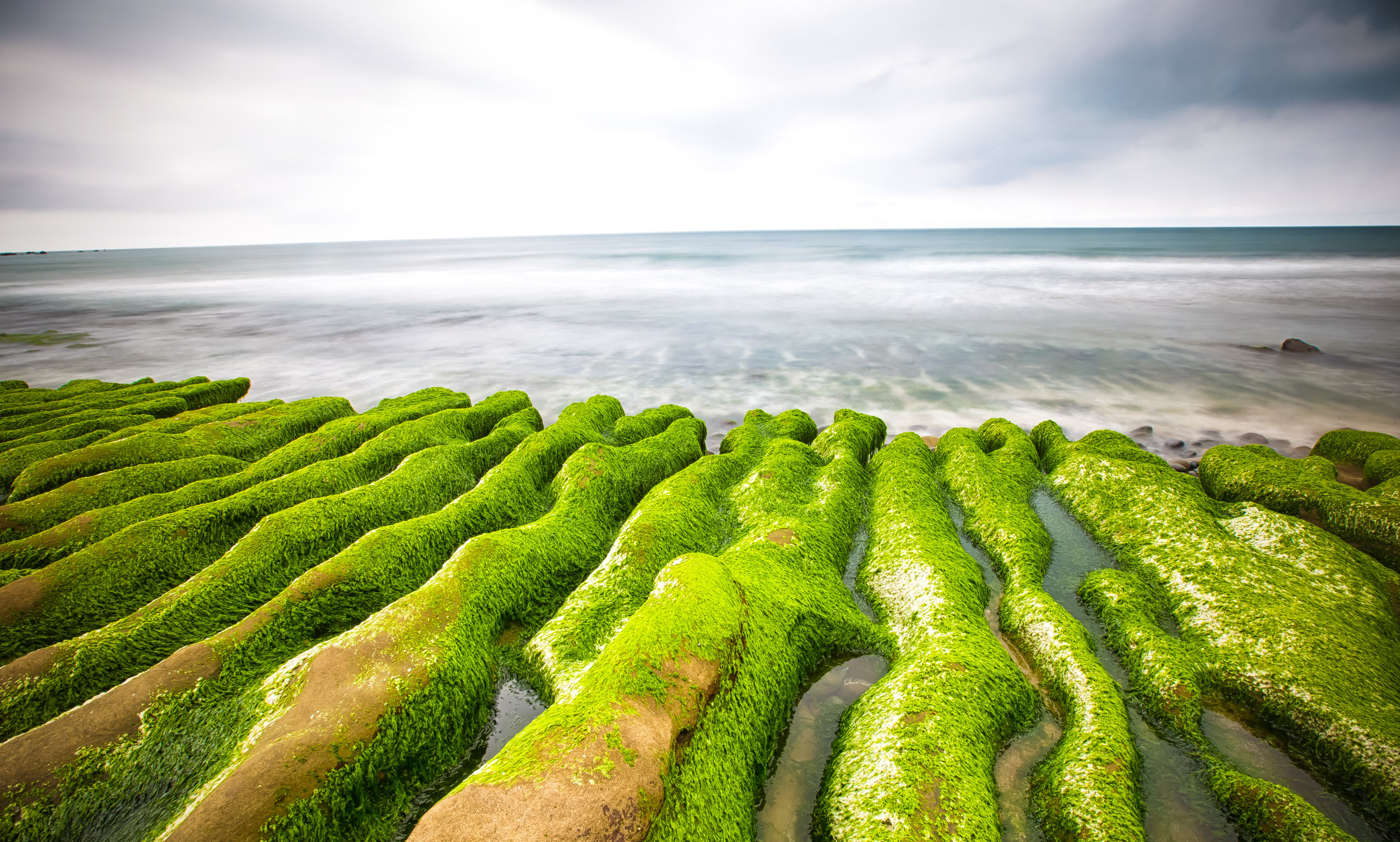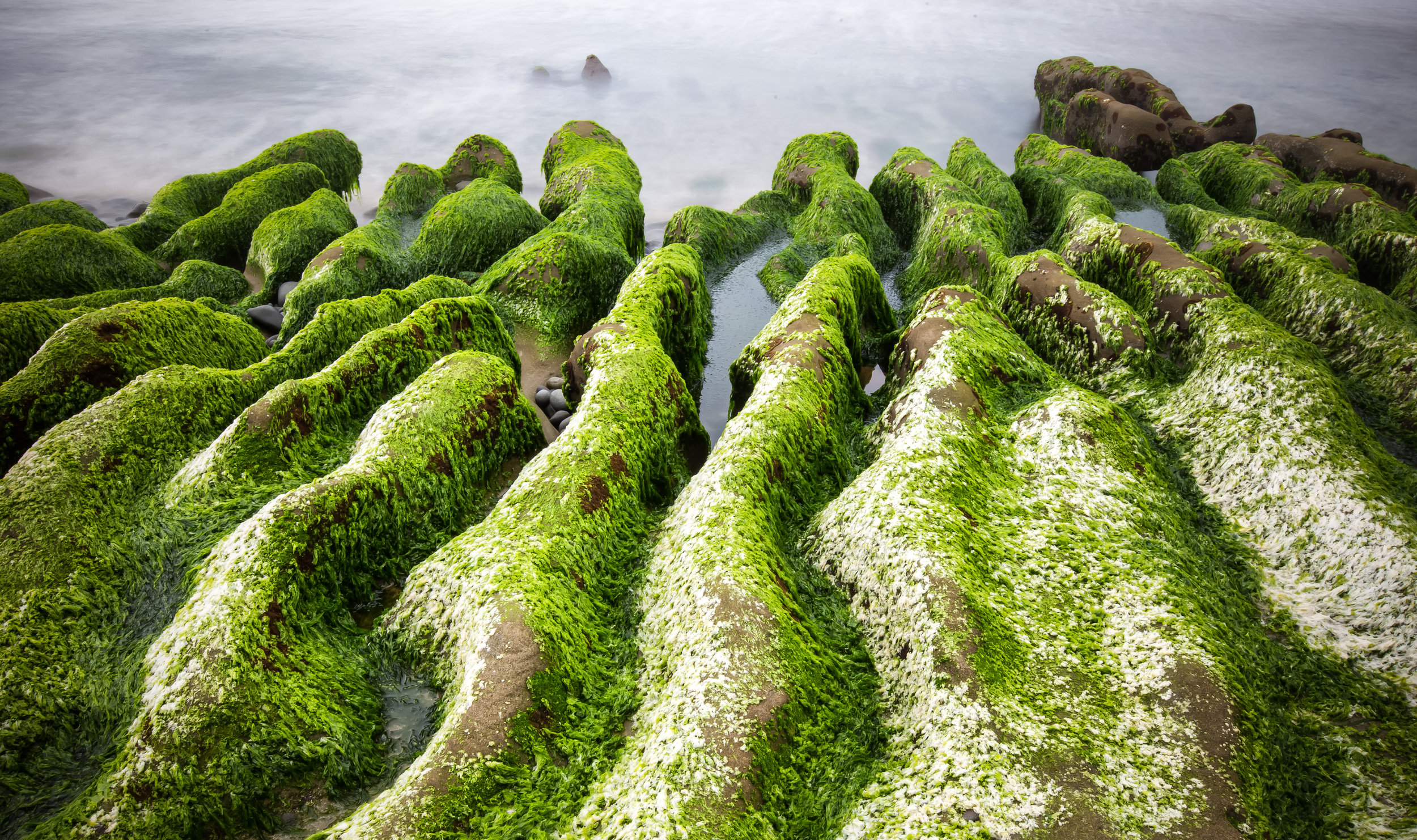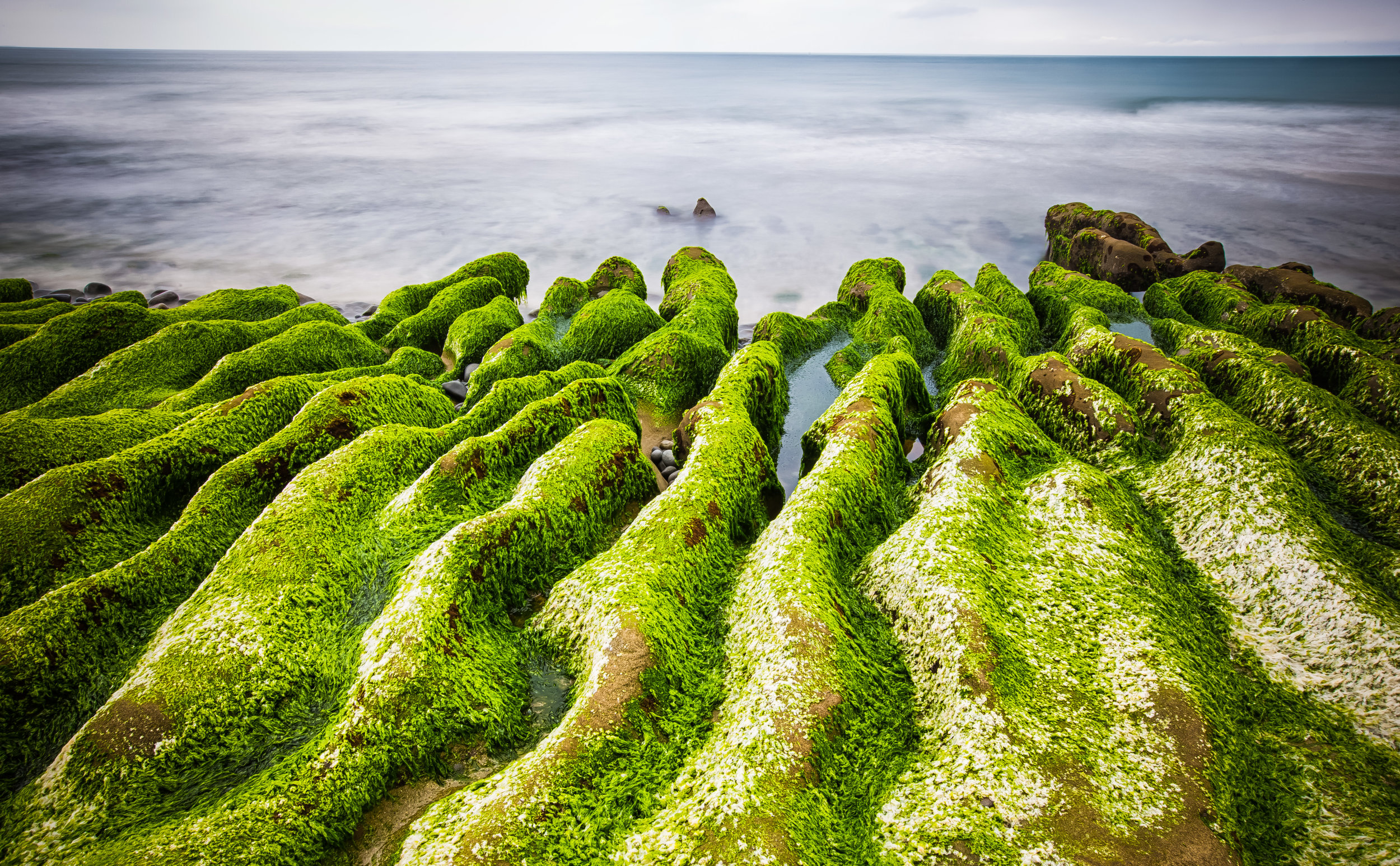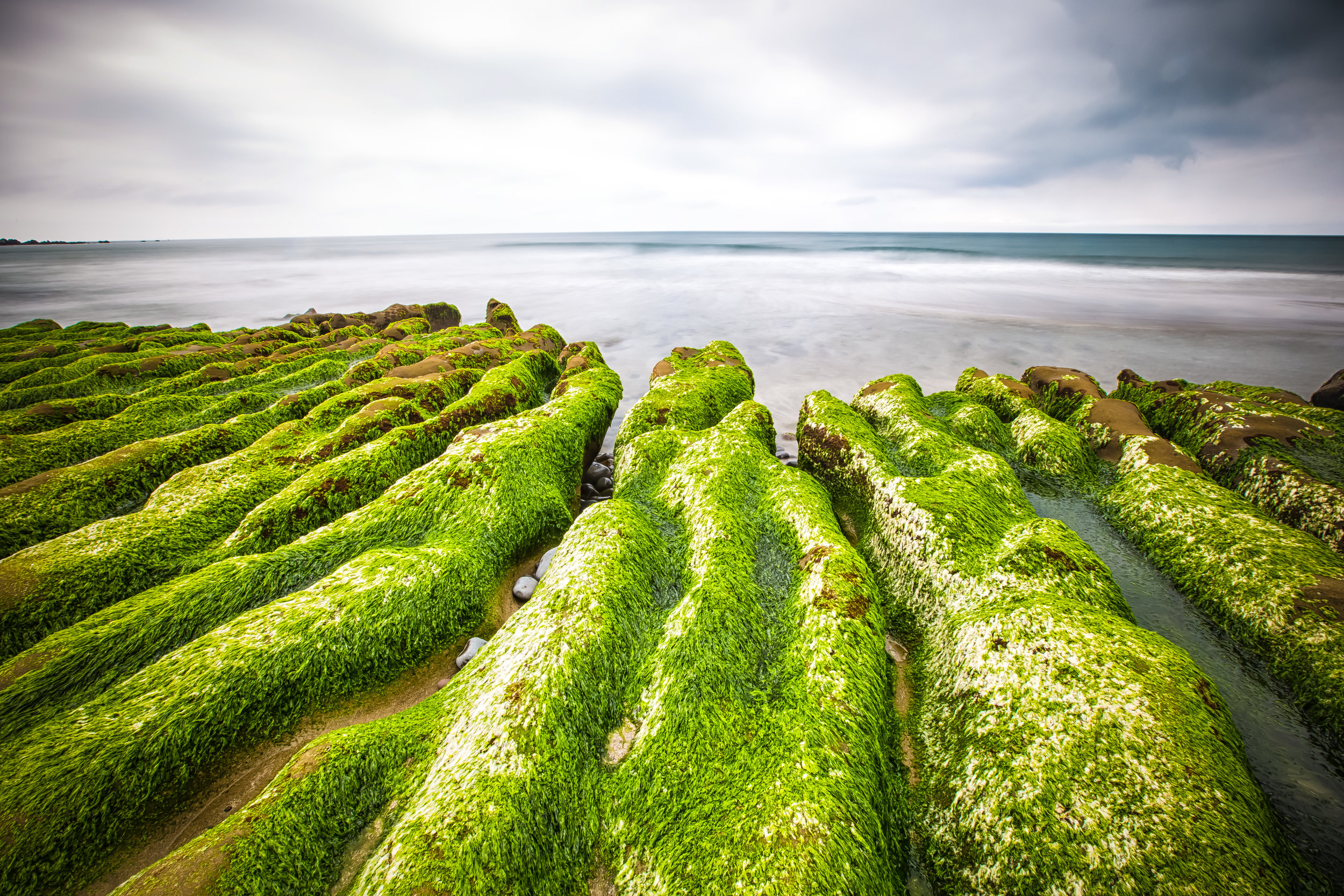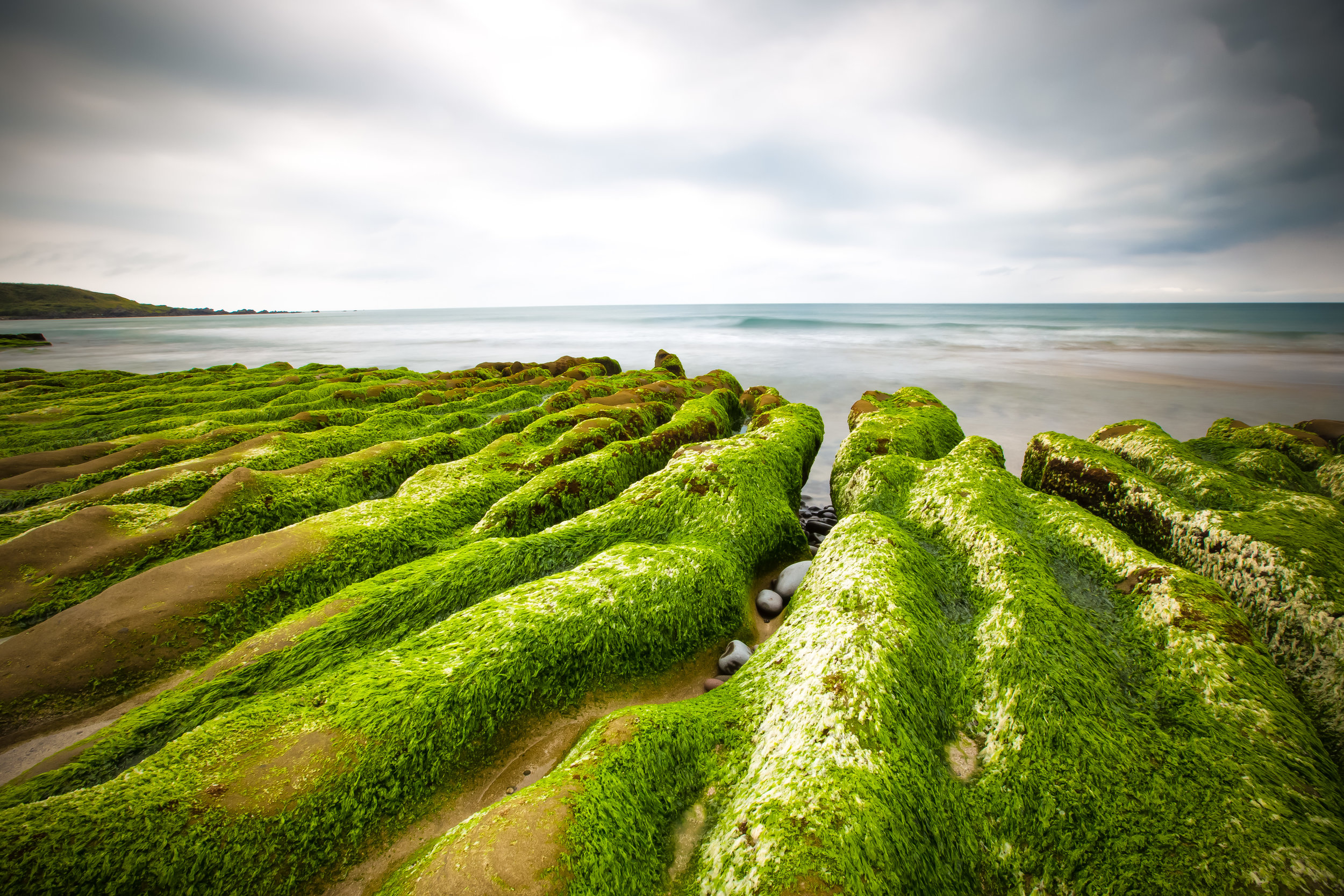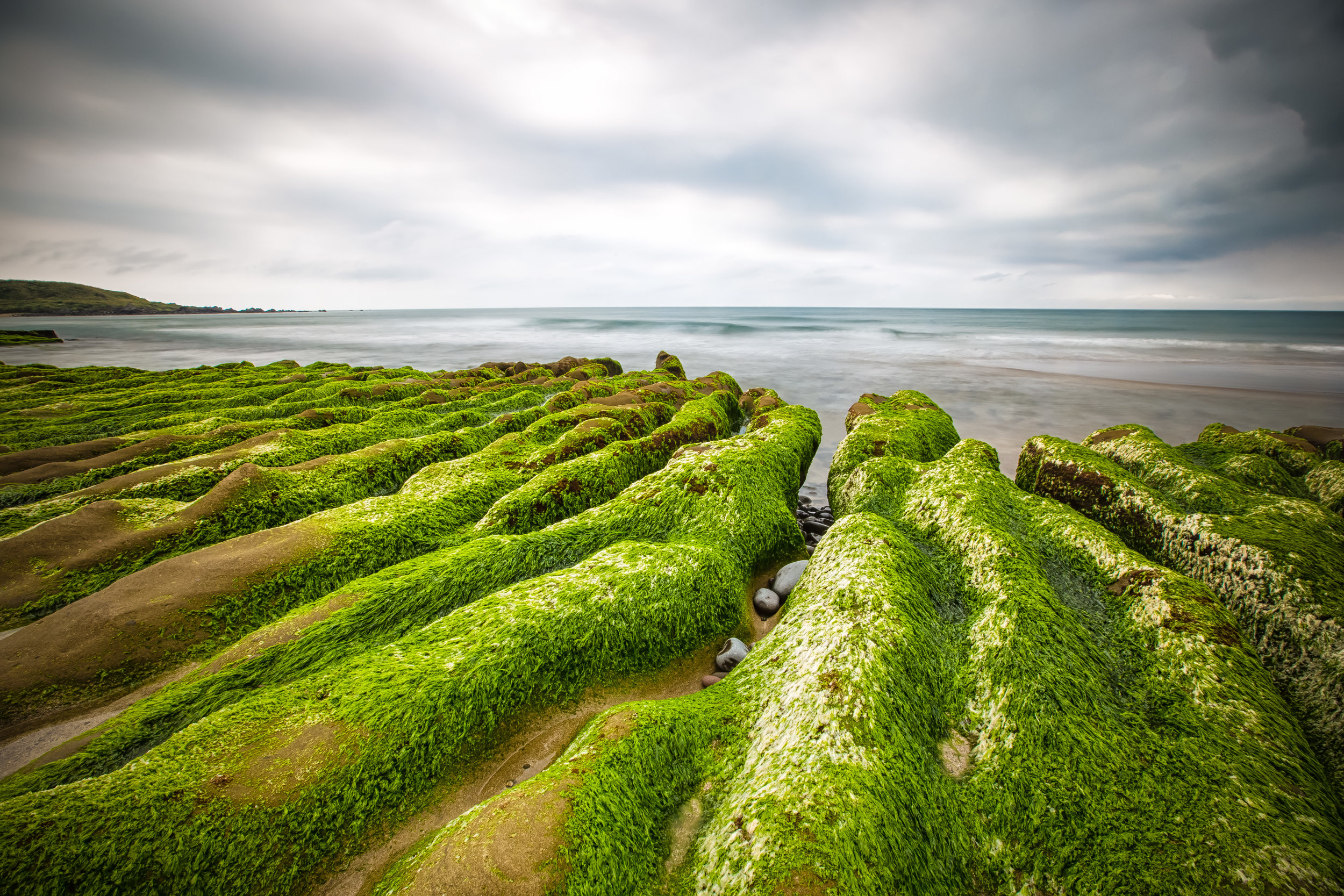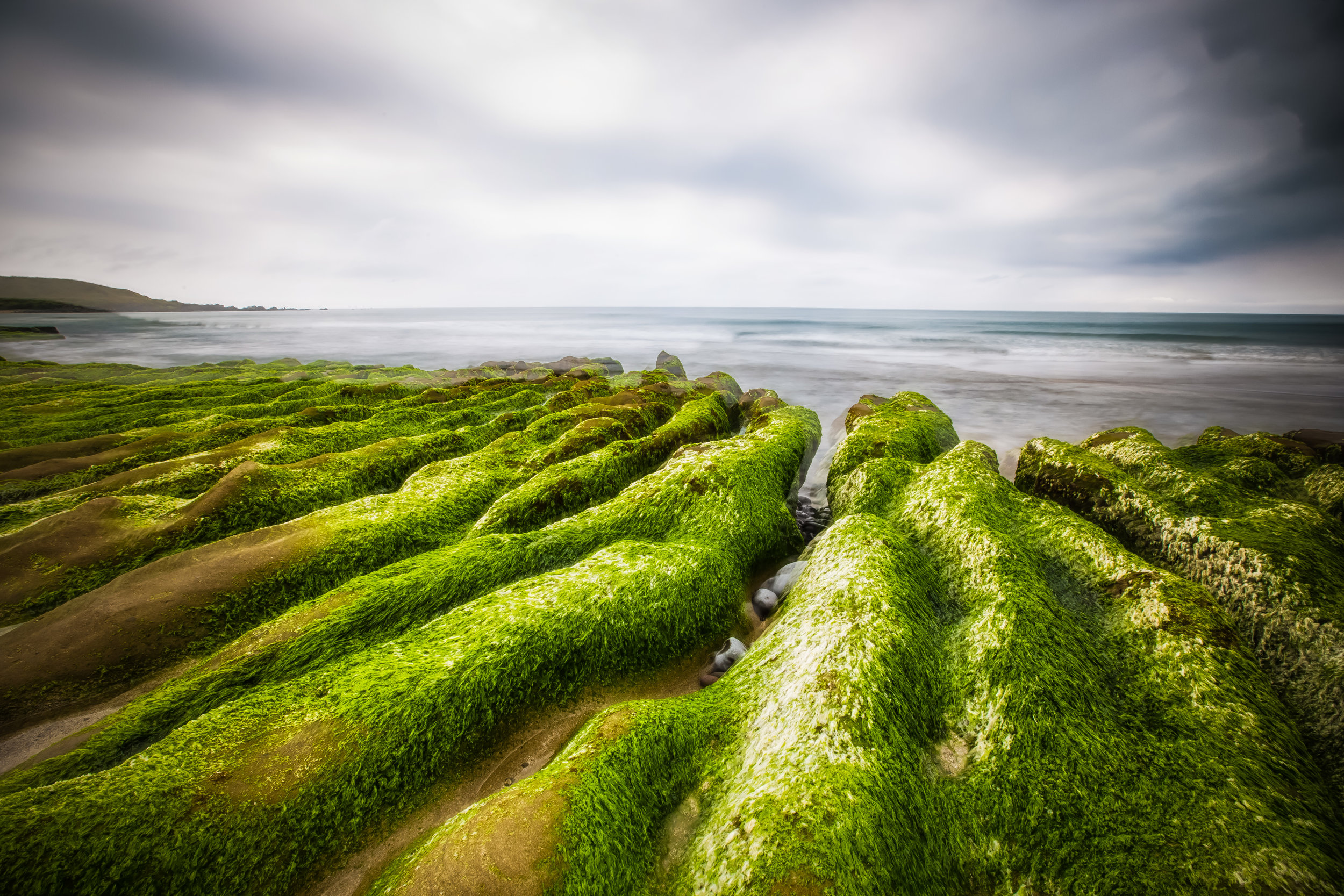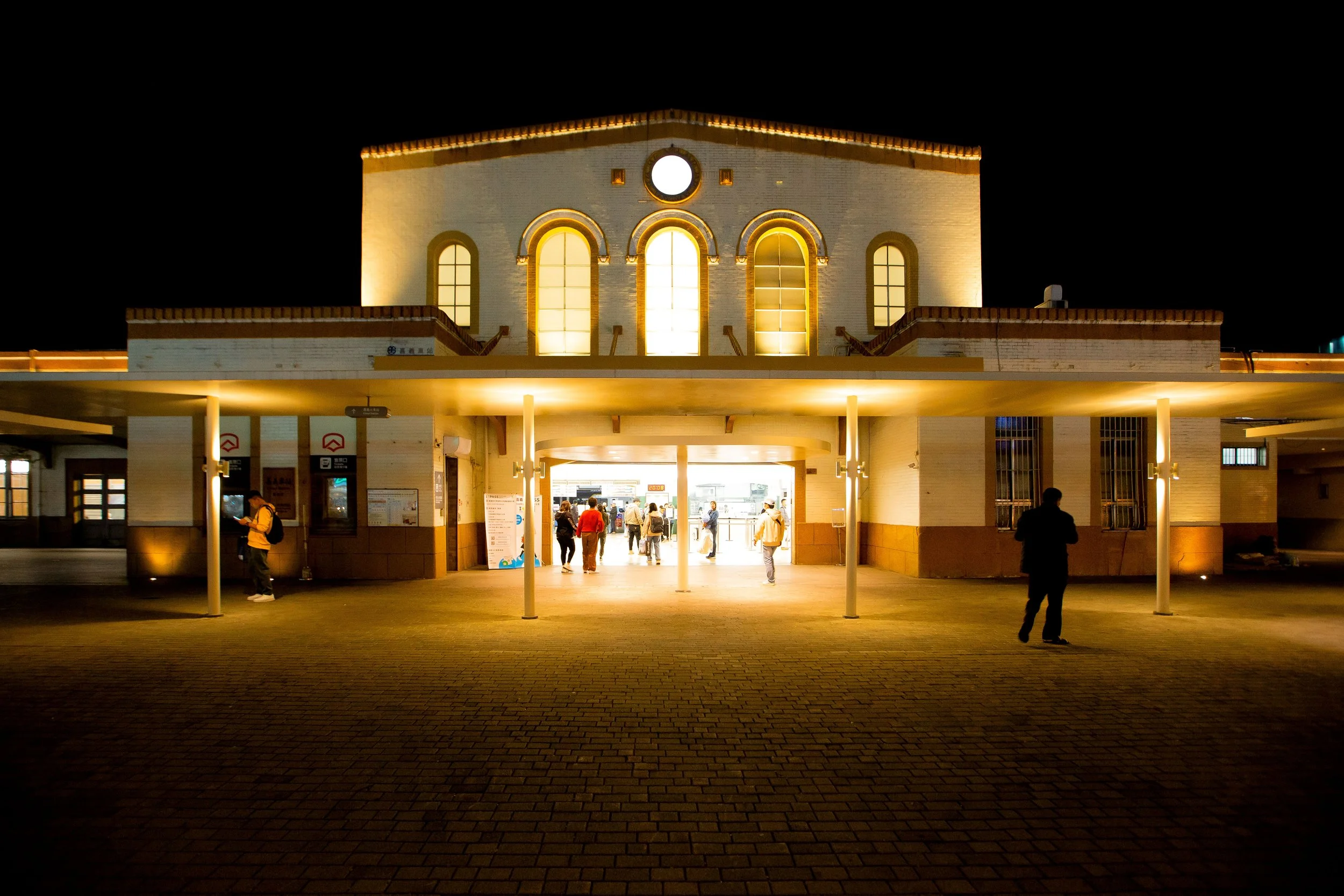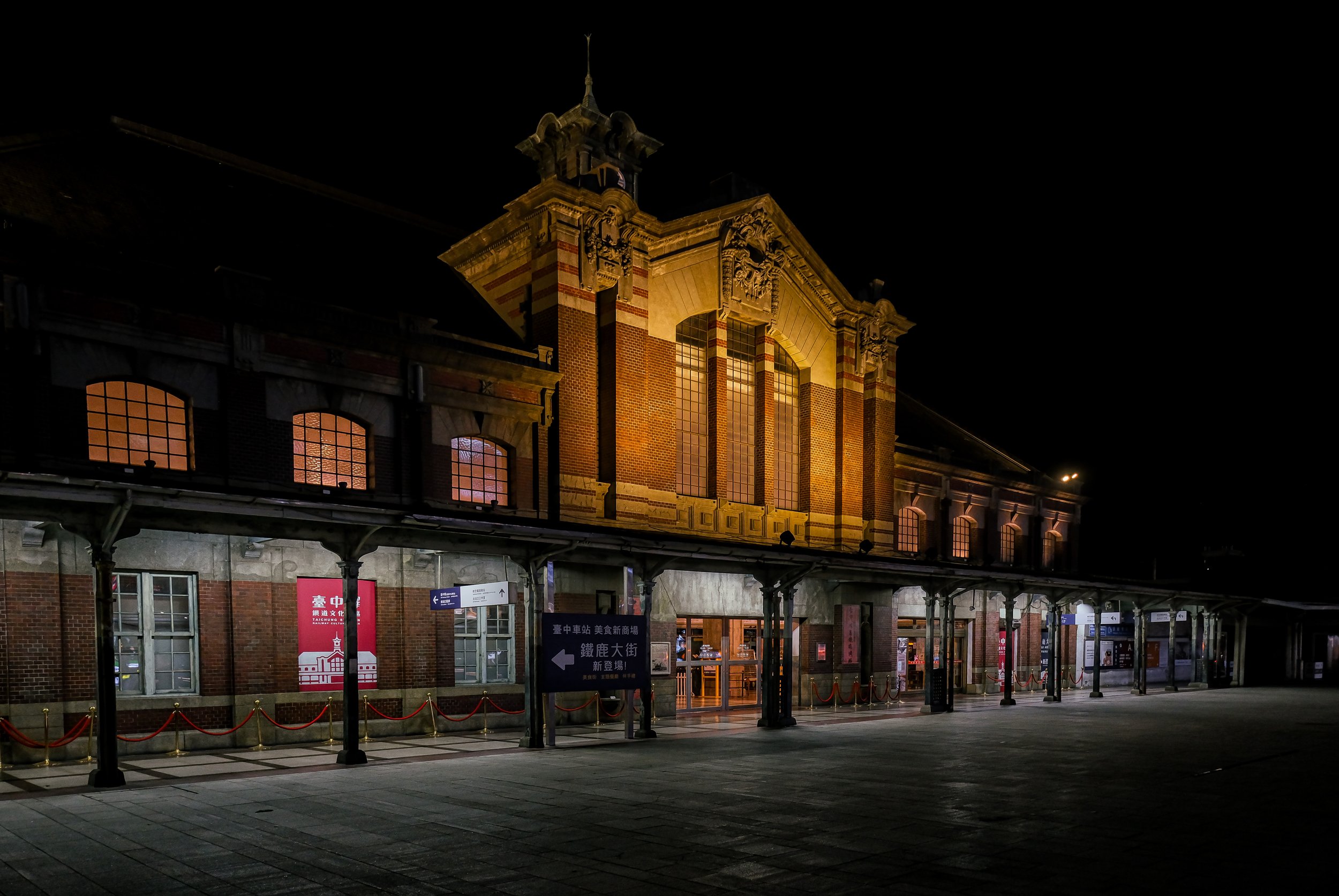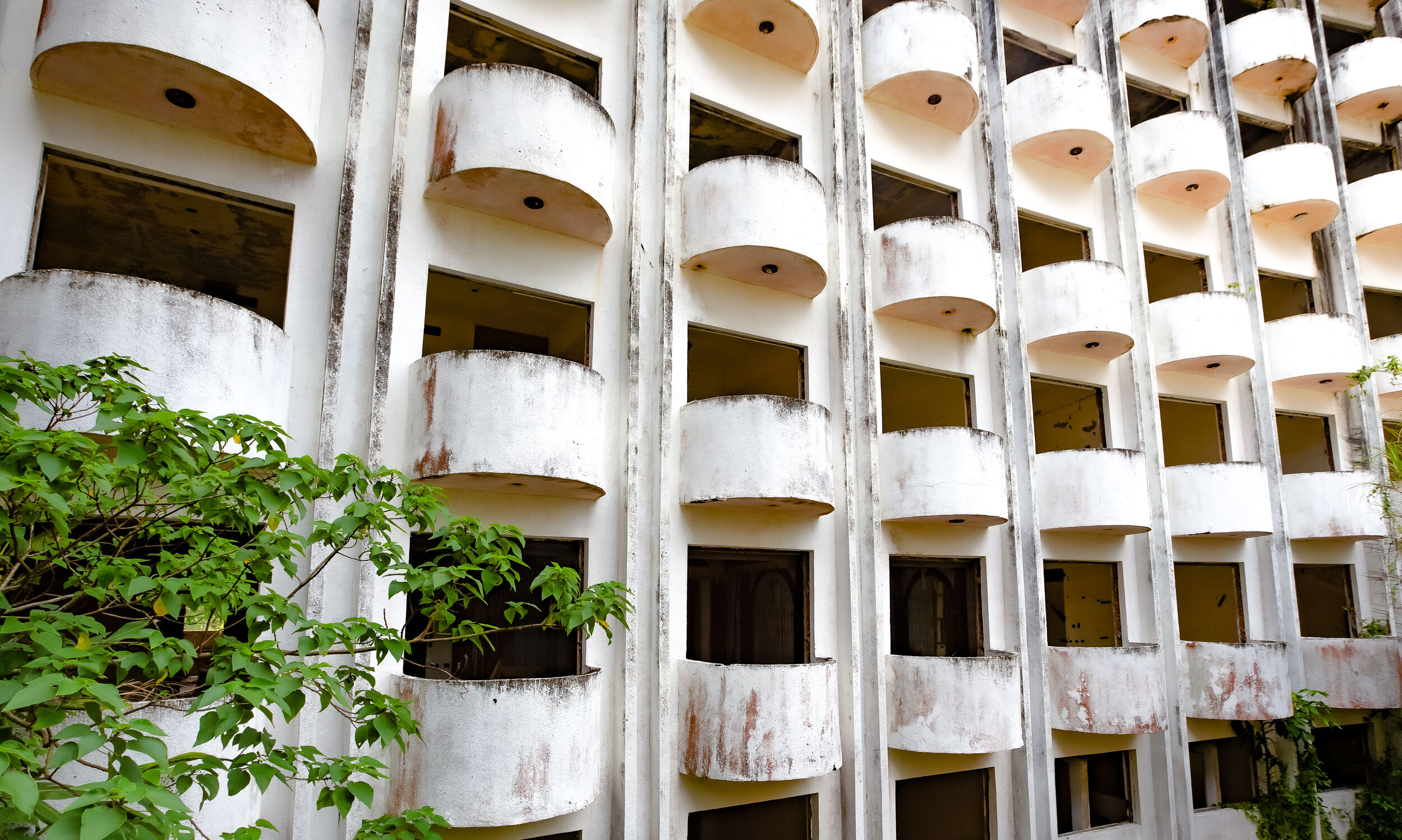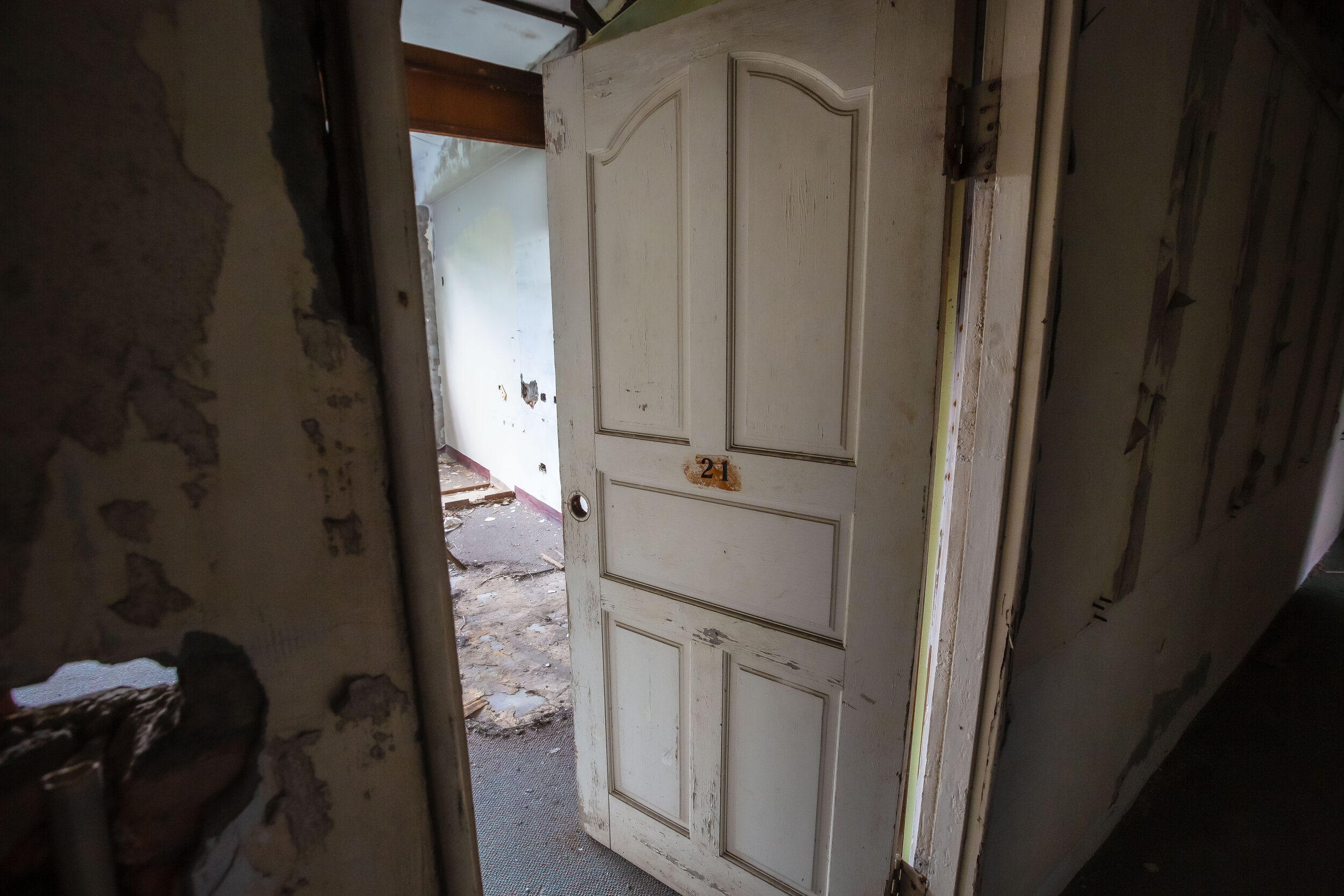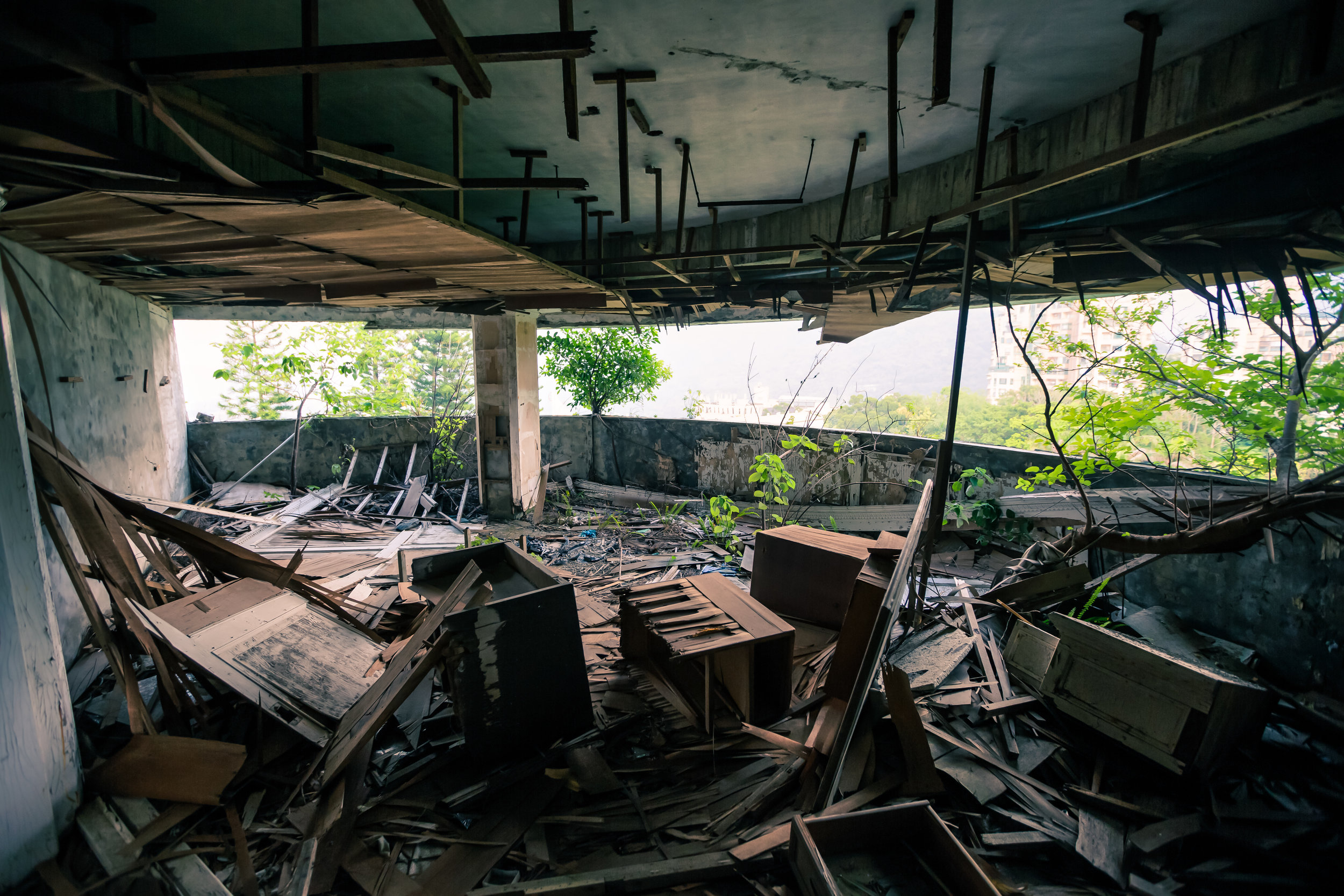A few weeks back I found myself driving along the North Coast on my way to take photos of the scenic Laomei Green Reef. While driving I noticed sign on the side of the road that pointed towards the famous “Sea Shell Temple”.
The temple was one that I had been aware of for quite some time and was always on my list of places to visit, but had never found the time to visit.
It was still quite early and as I preferred to take photos at Laomei a bit later in the afternoon, I decided to visit the temple first.
I was under the assumption that as the highway was next to the ocean that the so-called Sea Shell Temple would naturally be a short detour from the main road. To my surprise however the temple was a twenty minute drive up the mountains and the ocean could only be seen from a distance.
Pulling up to the temple gave me the strange feeling that I found myself in the wrong location. There was a large, but shoddy parking lot full of pot holes which led up to the rear of a building that looked a little bit like a poorly pieced together mountain shack.
I thought to myself that this couldn’t be the famous temple that I’ve heard about. The pictures I had seen made it look like it was a glittering palace but what I was seeing from the outside were nothing of the sort.
Instead of turning around and leaving though, I figured after driving all the way up the mountain that I should at least check it out - and I’m lucky I did!
The Sanzhi Sea-Shell Temple turned out to be is one of the strangest, yet most beautiful temples that I have visited in Taiwan. I’m always in awe of the craftsmanship and artistic prowess that goes into constructing Taiwanese places of worship, but this one takes it the extra mile.
Sanzhi Sea Shell Temple (三芝貝殼廟)
Strangely, even though locals and street signs refer to the temple as the Sea Shell Temple (貝殼廟), it is actually named the “Fufuding Mountain Temple” (富福頂山寺). I’d argue that the English translation loses a bit of its lustre. Nevertheless, the Sea Shell Temple is a bit easier to remember in both languages.
Unlike most of the temples that I write about, this one is not a place of worship that attracts people for its long history - What attracts crowds of tourists is obviously unique design and thus the reason why its nickname is more widely known than its actual name.
It may seem gimmicky, but the design and art in the temple is the main attraction and even though people make sure to pay respect to the gods enshrined, its obvious that the religious aspect of it all is less important.
The temple is primarily dedicated to Buddhist monk and Ji-Gong (濟公) and the Eighteen Arhats (十八羅漢) and as is common in Taiwan is somewhat of a mixture of Buddhist and Chinese folk religion traditions.
The Eighteen Arhats were the original disciples of the Buddha who followed his instructions and achieved enlightenment. The Arhats are popular figures within Buddhism and Chinese folk religion and it is common to find their images in temples. The Arhats are thought to be tasked with preserving and spreading Buddhism throughout the land and each of the monks are thought to have supernatural powers.
The so-called “Mad-Monk” Ji-Gong, whom the temple is primarily dedicated to is a figure who is commonly associated with the Eighteen Arhats in Chinese folk religion. Ji-Gong was a 12th Century Chinese monk who lived during the Southern Song Dynasty (南宋朝). Thought to have possessed supernatural powers, Ji-Gong spent quite a bit of his time helping the poor and standing up to injustice.
Known also for his wild and eccentric behaviour, Ji-Gong is said to have performed miracles and spread Buddhism while at the same time violating his monastic vows by consuming meat and alcohol and enjoying some alone time with women. By the time of his death he was given the title “Living Buddha” (活佛) and also thought to be the reincarnation of the Arhat Nantimitolo (慶友尊者) as well as being deified as a Chinese folk-hero deity.
The main shrine of the temple is dedicated to Ji-Gong, but there are also a number of other Chinese-folk religion deities most notably including images of the Earth God (福德正神) at the entrance and exit of the cave that leads visitors behind the main shrine.
The main attraction of the temple is its “Eighteen Arhat Cave” (十八羅漢洞) which is a man-made cave dedicated to the Arhats. The walls are lined with spiky white coral and there are several beautifully designed enclosures where shrines are set up.
A walk through the cave doesn’t take that long, but you need to be very careful not to hit your head which would probably be quite painful. Before you enter the cave and when you exit you are asked to take a sniff of a large kettle of hot rice wine. I was a bit confused as to why they’d ask guests to smell the wine, but considering the temple is dedicated to Ji-Gong, a notorious alcoholic, it makes a bit of sense.
The small temple, which was completed in 1996 is said to be home to over 60,000 sea shells and its construction took over two years to complete. The design of the temple is similar to other temples in Taiwan but has a very ocean-like appearance thanks to the sea-shells and marine-related imagery making it seem almost as if you were visiting a temple under the water.
The front facade of a Taiwanese temple typically features beautiful stone carvings of lions and dragons but at this temple the stone carvings are replaced by sea-shell dragons pillars and sea dragon door guardians. The rest of the facade includes sea-shell lanterns and a sea-shell incense urn as well as having images of marine life on the walls.
Like most Taiwanese places of worship, the artistic design and the attention to detail put on display here is beautiful, but this one takes it to the next level. You could easily spend an hour looking at all of the artistic detail of the front facade of the temple alone.
Like all of Taiwan’s temples, entrance is free of charge and you won’t be hassled for donations. You will be asked though to burn some incense and pay respect at the main shrine if you want to enter the cave. While the rules may not exactly apply to foreigners like myself, if you are Taiwanese, they will request you first pay respect before entering.
Environmental Concerns?
One thing I don’t like to do too much when introducing religious stuff in Taiwan is criticize. I’m a guest in this country and even though I’ve lived here for over a decade, there are still a lot of things, especially culturally that I don’t fully understand.
What I do understand however is that the world’s supply of healthy coral reefs is decreasing at a catastrophic rate. If you are unaware of the importance of coral, let me explain: Earth’s coral reefs are home the most diverse ecosystems on the planet. Reefs are found all over the world in tropical and subtropical oceans and are home to at least a third of the planets marine life all the while taking up less than one percent of the total area of Earth’s oceans.
Currently more than 75% of the coral reef on the planet are considered threatened and unfortunately many have already been lost. Factors that include the warming of the oceans, ocean acidification, overfishing, sewage and the collection of reefs as ornaments (among others) are putting massive strain on the livelihood of the remaining coral environments.
Having spent quite a bit of time scuba diving and snorkelling here in Taiwan, it is easy to observe the year-by-year degradation of the reefs which are extremely important eco-systems for aquatic life.
The amount of reef that it took to build this temple is not insignificant and as they are currently in the process of building a second and even larger branch, I think its only natural to question where the coral reef is coming from and whether or not it was dead before being taken out of the water.
When it comes to the environment, the Taiwanese government boasts that its on the ball, but in most cases it is easy to see that environmental sustainability and punishing polluters is not really high on their list of things to do.
The people who run the temple insist that the coral used in its construction has all been imported, that the coral used was of the variety that isn’t considered to be “protected” and that it was already dead before taking it out of the ocean.
I sincerely hope that they are telling the truth, however it is also a good idea to remain skeptical and ask lots of questions.
Getting There
Getting to the temple is a bit difficult if you don’t have your own method of transportation. The temple is on top of a mountain a short distance from the Sanzhi (三芝). If you are intent on visiting you could take a bus to the village and walk up the mountain, but that would be a long walk. The easiest way to get to the temple is by car or scooter and all you’ll have to do is follow the map provided above!
There is no denying the beauty of this temple - It is one of the coolest temples that I have visited in Taiwan. The attention to detail and the craftsmanship required to successfully design and build something like this are remarkable. I just question whether it is necessary to contribute so much destruction to the oceans for something like this.
Ultimately that is not for me to decide. I hope you enjoyed the photos.
Gallery / Flickr (High Res Photos)
